Hisense U7KQ with a size of 100" is clearly a better television compared to the smaller diagonal variants. The proprietary VIDAA system has a similar interface to other televisions (e.g., with Google TV on board). It works quickly and efficiently. It does not freeze or contain errors. Only the built-in file player sometimes struggled with performance. However, it is worth looking at the app tests, as not all of them were available at the time of writing the review. The television's features are quite extensive, and nearly everything we tested was successfully implemented. When used during the day, the high brightness of the panel is commendable, as it can cope even in very sunlit living rooms. When watching in cinema conditions, we can expect good blacks thanks to the VA panel supported by multiple dimming zones. The screen handles low-quality content (e.g., SD channels or DVDs) relatively well; a certain downside is the lack of a function to reduce posterisation (i.e., the distinct tonal transitions). This looks much better in 4K HDR films because we have a wide colour palette and strong light effects. Support for Dolby Vision and Dolby Atmos is another advantage, although the speakers built into the screen are rather average. Sports enthusiasts will be pleased with the 120Hz panel with a smoothing system. When connected to a console, gaming on the television is very good due to low input lag. Motion blur is moderate, which means that it is very rare to notice slight "trails" during dynamic movements on a dark background. The lack of an HGiG mode reduces the visual quality of games in HDR format, while the absence of local dimming in VRR mode makes this latter function useless. Overall, the picture quality can be described as good and adequate for its price. There are no obvious flaws or unexpected advantages here, but there is a large size.
- Matching (Score)
- Our verdict
- TV appearance
- Where to buy
- Contrast and black detail
- HDR effect quality
- Factory color reproduction
- Color reproduction after calibration
- Smoothness of tonal transitions
- Image scaling and smoothness of tonal transitions
- Blur and motion smoothness
- Console compatibility and gaming features
- Input lag
- Compatibility with PC
- Viewing angles
- TV efficiency during daytime
- Details about the matrix
- TV features
- Apps
- Playing files from USB
- Sound
Hisense U7KQ vs Samsung QN80F 100"
Direct compare
Available screen sizes: 100”
Available screen sizes: 100”

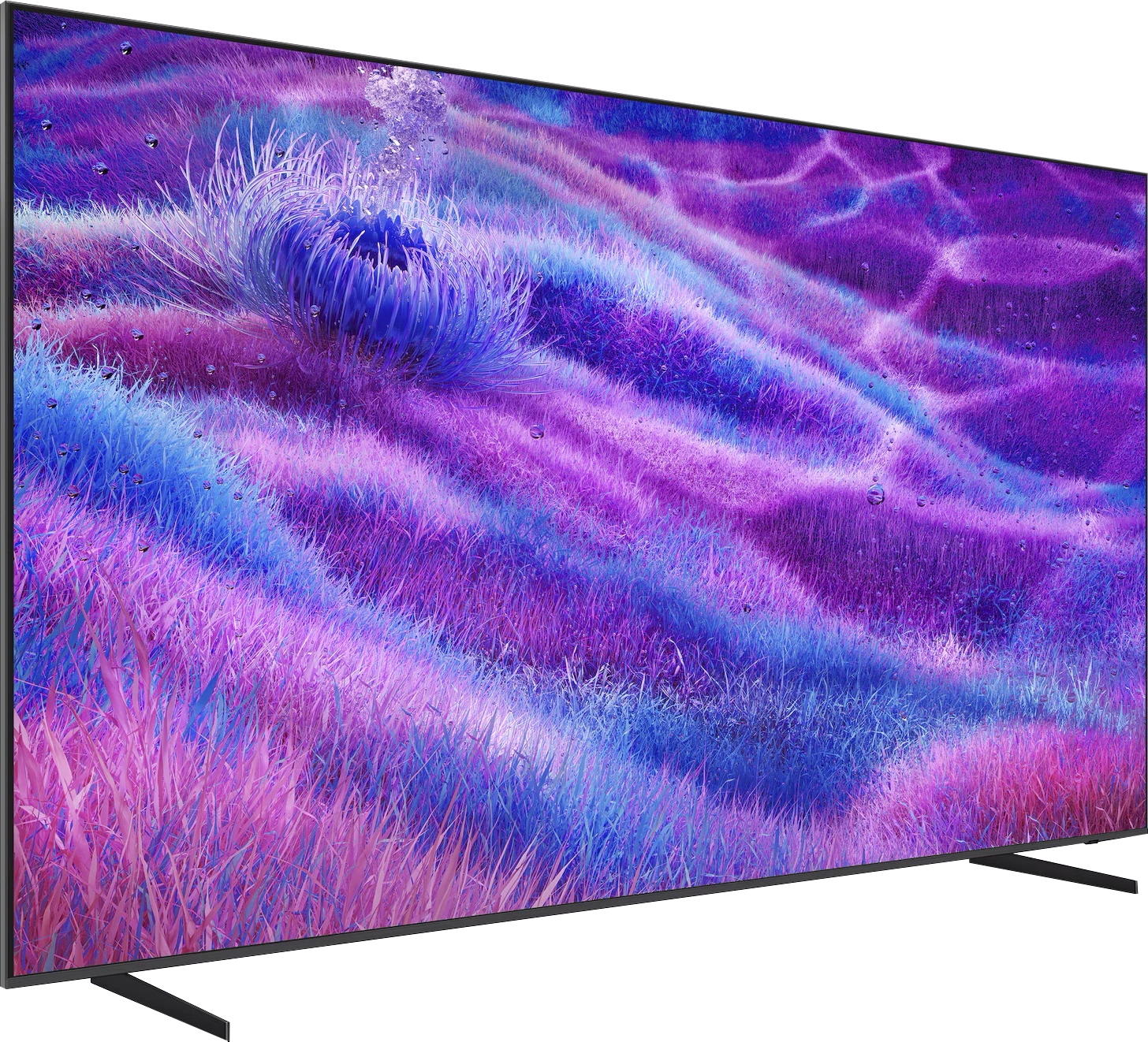
Panel type: LCD VA
Resolution: 3840x2160
System: VIDAA
Model year: 2023
Complete the survey to find out the result

Panel type: LCD VA
Resolution: 3840x2160
System: Tizen
Model year: 2025
Complete the survey to find out the result

Overall rating
7.5
7.4
Movies and series in UHD quality
7.5
7.2
Classic TV, YouTube
7.3
7.0
Sports broadcasts (TV and apps)
6.6
6.6
Gaming on console
8.2
8.6
TV as a computer monitor
8.0
8.6
Watching in bright light
7.8
7.0
Utility functions
8.2
7.7
Apps
7.7
8.7
Sound quality
6.9
6.7
Complete the survey to find out what fits your preferences
Advantages
Very good black
High brightness of the matrix
Stable and fast-operating system
Very good price-to-quality ratio in the 100" variant
HDR brightness up to 1300 nits
Good blacks - MiniLED with VA matrix
Fast 144 Hz panel and 4 HDMI 2.1 ports
Many features for gamers: VRR, ALLM and excellent game bar
Low input lag (<10 ms)
Fast Tizen operating system with SmartThings support
Support for Dolby Atmos
Disadvantages
Missing music applications (Spotify, Tidal)
Poor HDR effect in dark scenes with small light sources
Average viewing angles
Poor viewing angles
Limited number of dimming zones for a 100" screen
Absence of Dolby Vision and HGIG
Our verdict
QN80F is the first "eighty" from Samsung available in a 100-inch version (previously "only" 98 inches 😉) and is also the model that entered the series with Mini LED backlighting. It must be admitted that it performs really well at this scale. Although the number of dimming zones is not impressive for such a massive screen, the contrast and black levels are solid, and combined with high brightness, the television can deliver excellent experiences in HDR movies and series. The 144 Hz panel ensures smooth motion, and a full set of gaming features – VRR, ALLM, and Game Motion Plus – makes it difficult to label the QN80F as anything other than a screen designed for both consoles and PC. Additionally, there is the fast and stable Tizen, which provides access to all key applications and can serve as a smart home hub through the proprietary SmartThings app. Naturally, there are some shortcomings – there is no Dolby Vision, no USB recording, and the viewing angles at 100 inches can be quite problematic. Mini LED still has its limitations, so those expecting absolutely perfect blacks need to keep that in mind. On the other hand, given the current prices of OLEDs in such sizes, it's hard to speak of real competition.
QN80F is a versatile television, well-crafted and providing a lot of satisfaction on a daily basis. Looking at the history of this series, one can be sure that as soon as it appears at reasonable promotions, it will be one of the most interesting offerings in its class. And if Samsung addresses the minor shortcomings with updates, this 100-inch beast may turn out to be really hard to beat, just like its smaller versions.
TV appearance





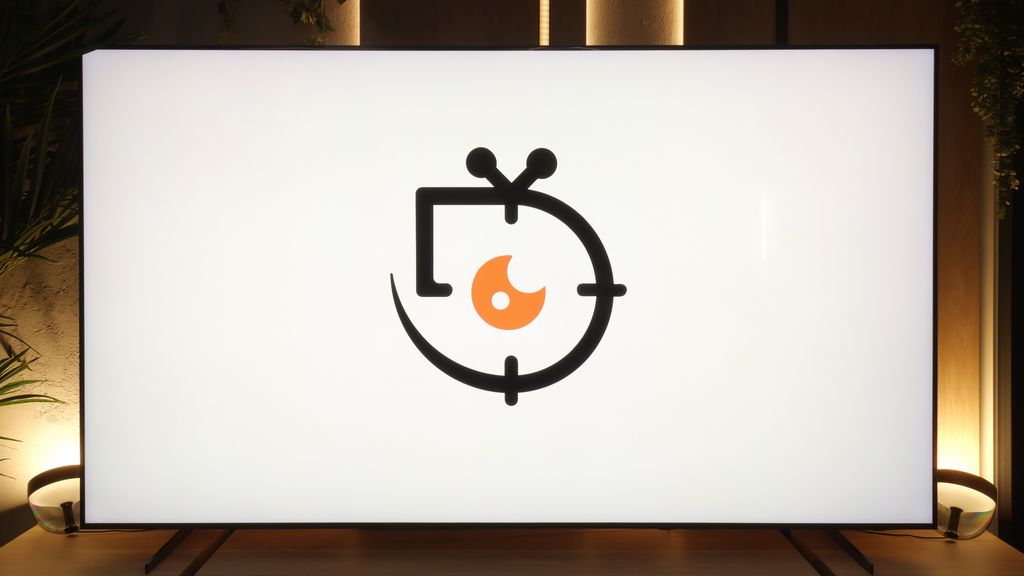

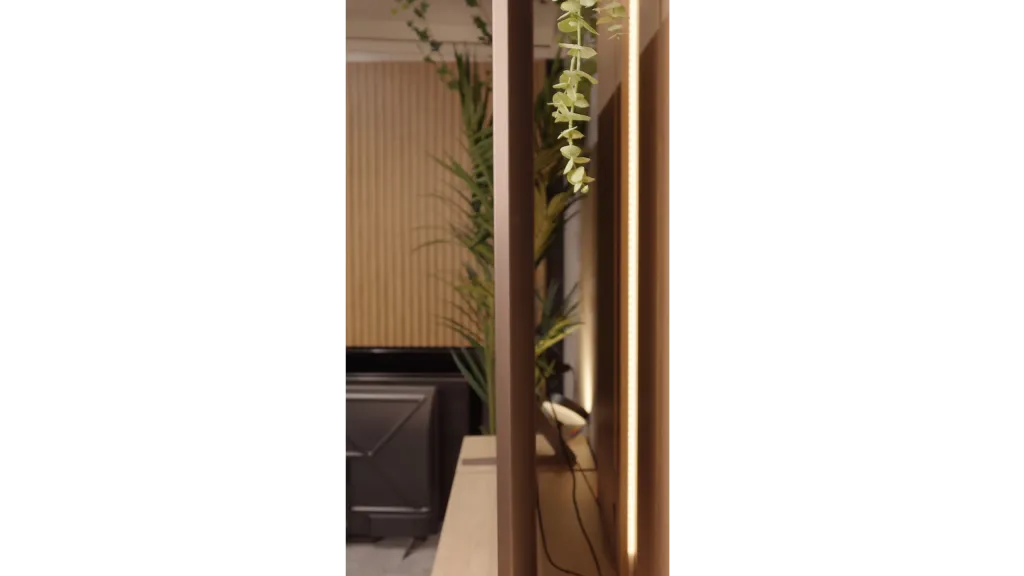
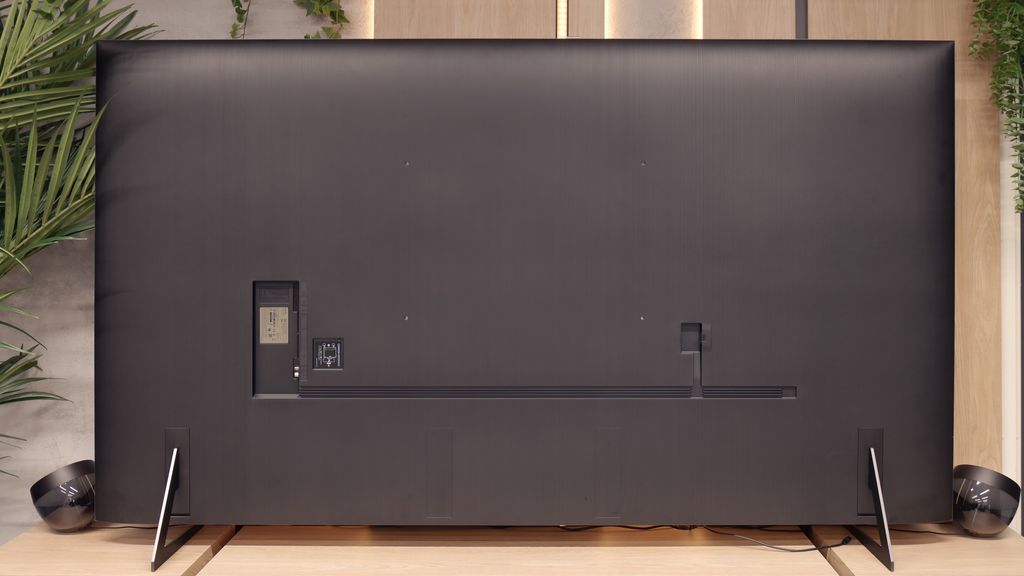
Contrast and black detail
8/10
7.1/10
Local dimming function: Yes, number of zones: 1620 (30 x 54)
Local dimming function: Yes, number of zones: 120 (10 x 12)
Contrast:

Result
124,650:1

Result
56,350:1

Result
24,550:1

Result
15,600:1

Result
12,600:1

Result
94,400:1

Result
12,650:1

Result
31,750:1

Result
7,350:1

Result
3,000:1
Halo effect and black detail visibility:

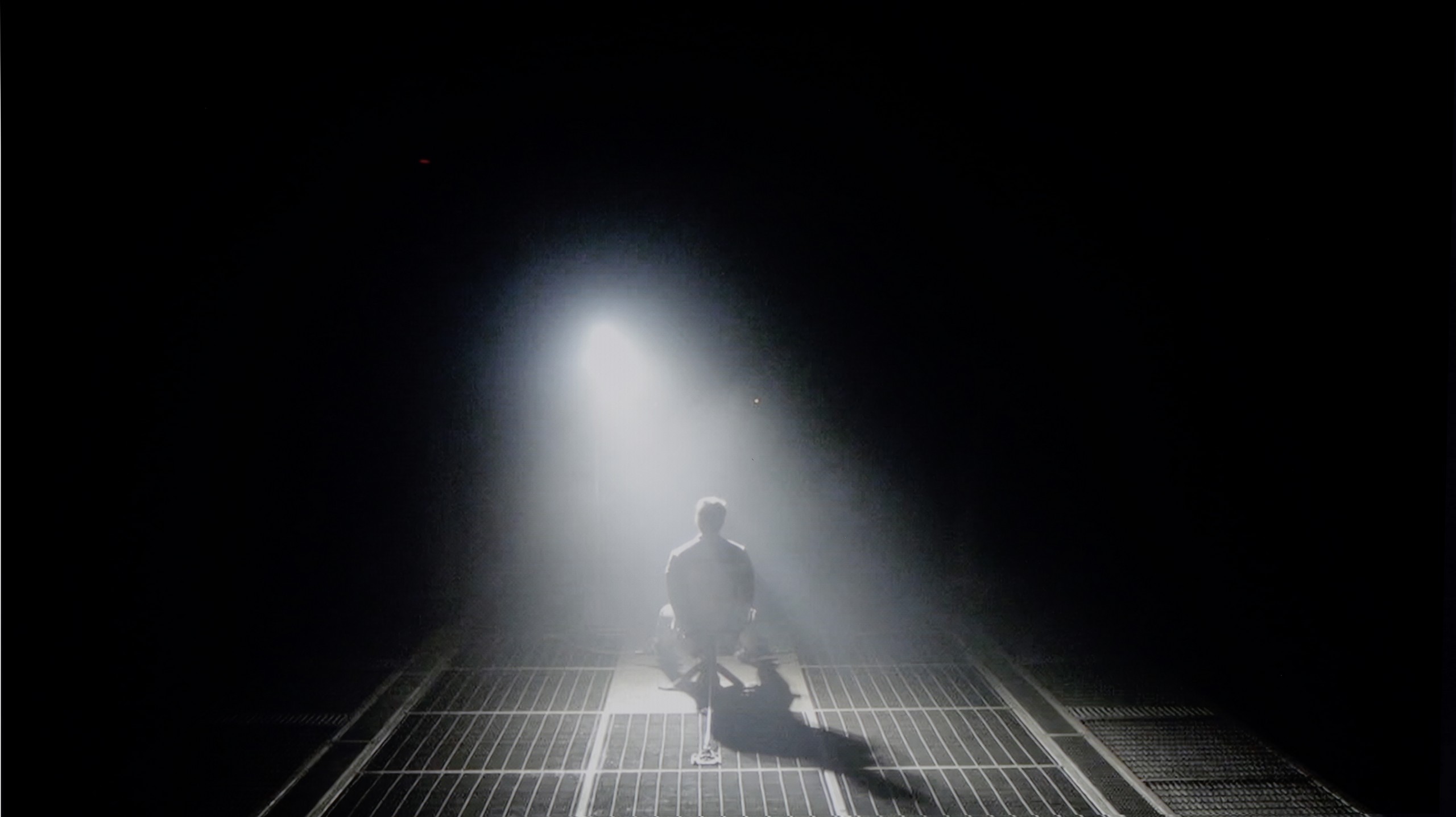
The television is equipped with a VA panel, which has a high contrast even without the support of local dimming technology. Through additional support from Mini-LED technology, the television is able to offer really good black levels, both in muted, dark scenes and in mixed ones where black is interwoven with bright elements. It is safe to say that even in the most challenging test sequences, it achieved a result above 10,000:1. With the room fully darkened, sometimes the effect of zone dimming can be seen, in the form of a slight halo effect around text or brightening areas when a bright element moves quickly across the screen. However, this is a normal occurrence that is not bothersome. The television, like most LCD screens with local dimming, has a moderate tendency to dim the image, particularly small light sources in dark scenes.
The QN80F is part of the NeoQLED family, which are Samsung televisions based on mini-LED technology. In practice, this means local dimming zones that are intended to improve contrast and light separation. In the case of the 100-inch version, we are dealing with a VA panel combined with about 120 zones – a rather modest result for such a large surface, although it must be admitted that it still translates into noticeably better results than in smaller screen sizes. In the best scenes for it in films, the contrast can be truly strong – five-digit values are not an exaggeration, and the lights separate from the black in a way that is impressive at first glance. However, physics cannot be deceived. Since such a huge screen must "work" with a relatively small number of zones, there are moments when the television struggles with image control. For example, when a multitude of bright, small elements appears against a black background in the final scene of a film, there are visible halos and glowing around them. This shows that even with a finely-tuned algorithm, mini-LED still has its limitations. Generally, however, the contrast can be considered very good, and in everyday viewing, most users will be fully satisfied. It is just important to remember that this model does not provide absolute black, as known from OLEDs, just as no LCD television does.
HDR effect quality
6.3/10
6.5/10
Luminance measurements in HDR:

Result
985 nit

Result
343 nit

Result
737 nit

Result
298 nit

Result
1170 nit

Result
1150 nit

Result
721 nit

Result
875 nit

Result
377 nit

Result
849 nit
Scene from the movie “Pan” (about 2800 nits)


Scene from the movie “Billy Lynn” (about 1100 nits)

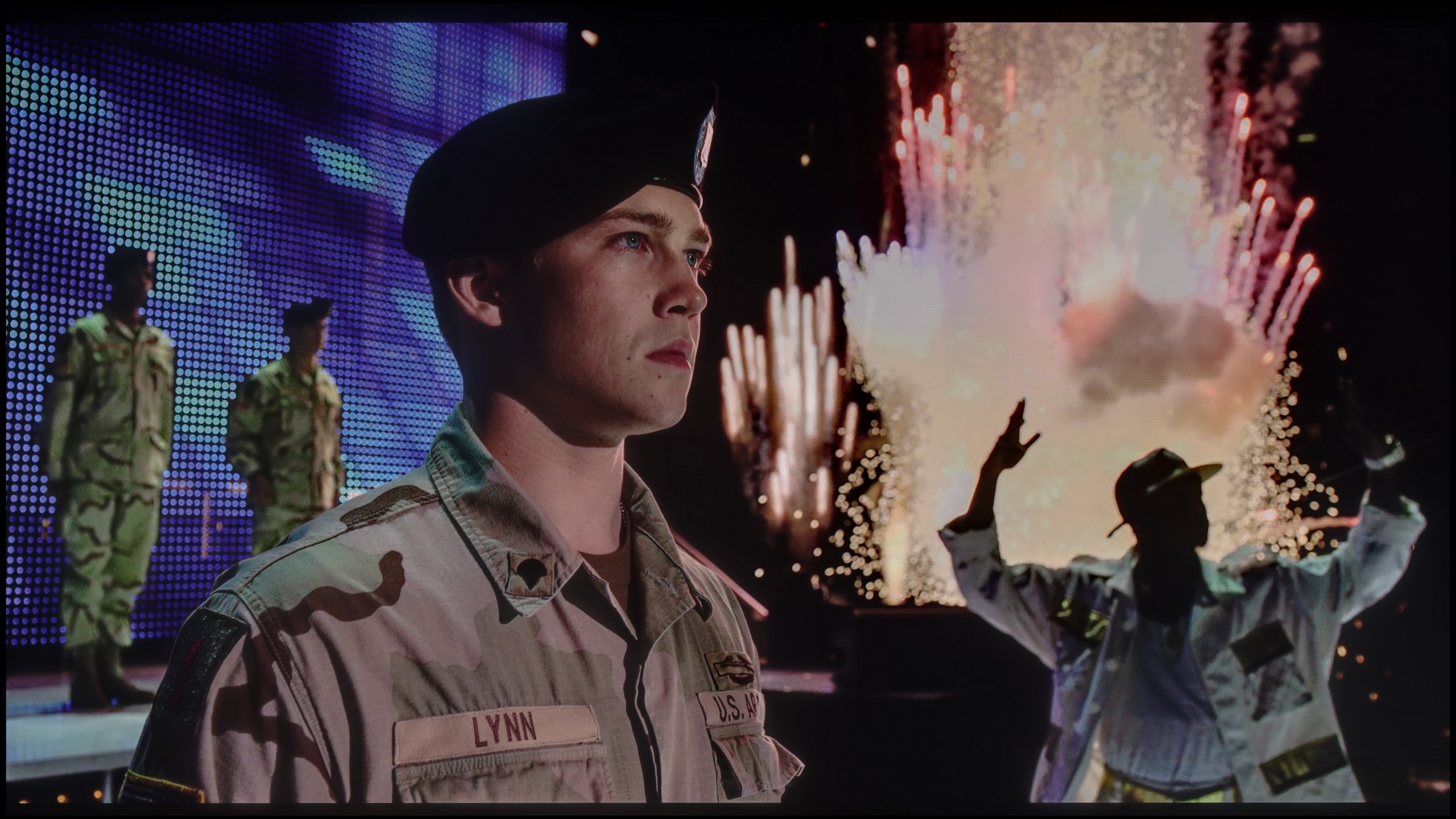
Static HDR10

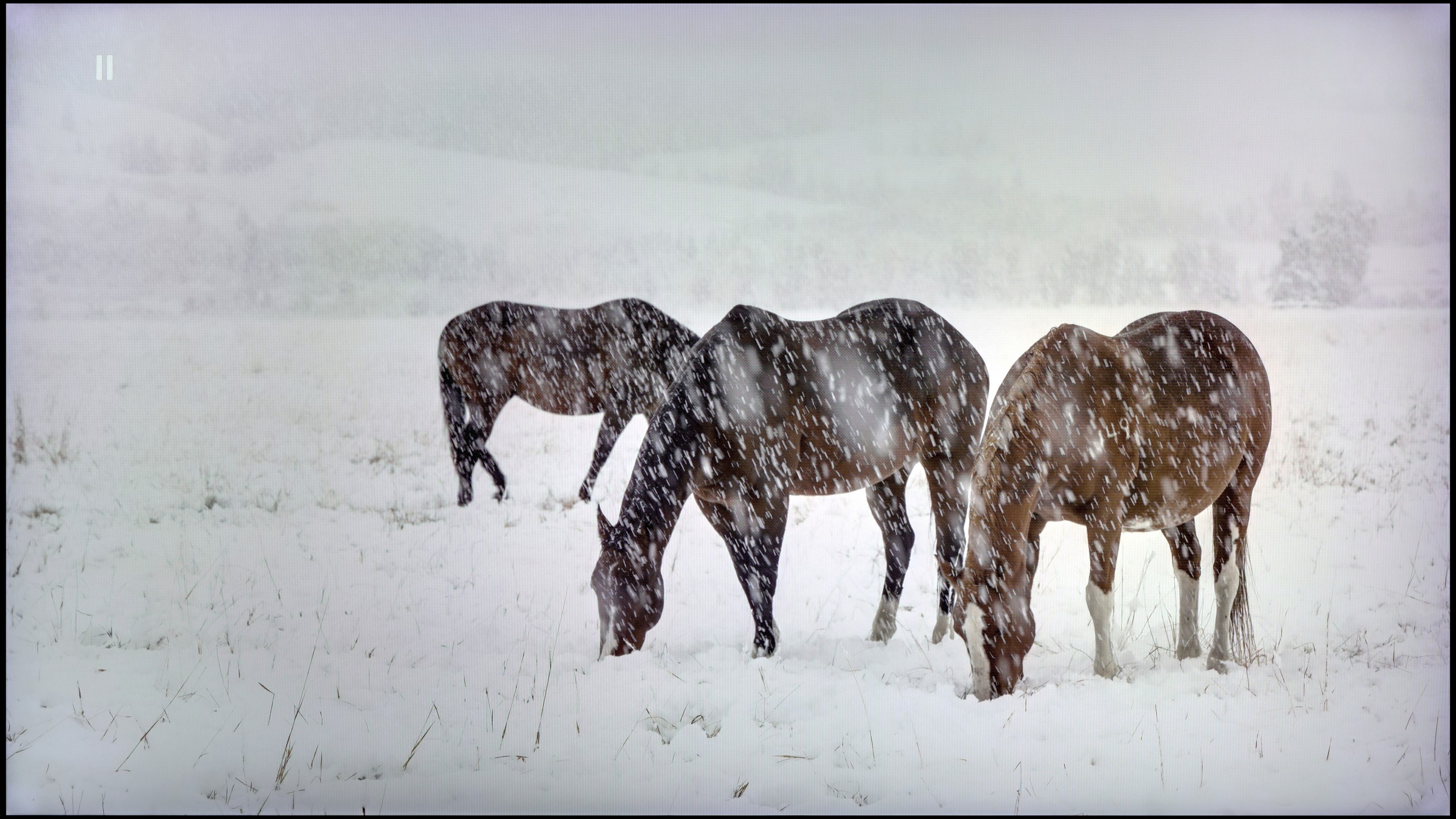
Dynamic: Dolby Vision
Dynamic: HDR10+


HDR luminance chart:
Samsung QN80F 100"
HDR luminance
Hisense U7KQ
HDR luminance
Describing the HDR effect in the hundred-inch model Hisense U7KQ is not straightforward and requires broader context. As can be observed, the results are highly varied, depending on the type of scene and the intensity of the bright effects the television is meant to reproduce. In bright scenes, the device achieves over a thousand nits of brightness, which translates to vivid and realistic images – these are exactly the effects we expect from equipment of this class. Unfortunately, the situation deteriorates in darker scenes. In mixed shots, such as those in the film "Gemini Man," the television still offers good brightness at a level of 700 nits, allowing for enjoyment of high-quality content. However, problems arise in very dark scenes, where small light sources play a central role. The television does not fully utilise its capabilities here to avoid degrading the black level in adjacent areas. As a result, there is no spectacular "WOW" effect, and such frames often do not seem as if they are being produced in HDR technology.
When it comes to HDR in Filmmaker mode, the QN80F can make a great first impression. Our laboratory tests have shown that under the best conditions, the television is capable of achieving brightness exceeding 1200–1300 nits. These are truly excellent results, making HDR effects in many films look incredible. The television is simply bright enough not to need to artificially adapt the image – the bright parts of scenes have the right 'power' and actually look like a light source. Of course, the laboratory is one thing, and everyday viewing is another. In practice, in film scenes, brightness generally oscillates in the range of 700–1100 nits. These are still great values that, in most cases, provide a strong sense of realism and make the lights on the screen truly capable of blinding. The problem arises in exceptionally challenging sequences, where, like almost every mini-LED, it reveals its limitations. A good example is Sicario 2: the scenes with the helicopter in the night sky look much weaker, and the lights lose intensity, dropping to around 370 nits, making it hard to speak of serious admiration. To this, we must add the issue of colours. Although we are dealing with a QLED, the coverage of the DCI-P3 colour palette is around 90%. This is a rather average result for a quantum dot television. In practice, this means that some colours may appear less saturated than we would expect, especially in demanding HDR productions.
Factory color reproduction
5.5/10
6/10


Factory Mode
After calibration


Factory Mode
After calibration
The best factory mode we measured was 'Filmmaker'. Despite this, its characteristics left a wide scope for comment. Let us take a look at the gamma chart, which is responsible for the depth and contrast of the image. First, we will pay attention to the orange line running through the middle of the chart, starting at point 2.4. This is the reference value of the REC.709 standard. Now, let us look at the measured value, which is marked by a white, connected multi-point. Such a significant drop in gamma to a value of 2.0 indicates a considerable decrease in contrast, resulting in an image lacking proper depth, and one could observe the so-called 'milk' effect. The next thing we tested was the white balance. Though unassuming, if poorly configured, it can alter the entire character of the image. At the beginning, the chart was progressing quite well, but as we went further, it began to be dominated by two colours: red and blue. Due to the current state of affairs, all the materials we used for testing had an unpleasant tint in those colours. However, thanks to rich calibration tools, such as an advanced colour management system (CMS) and 2- and 20-point grey scale adjustment, we were able to significantly improve the display's performance in SDR materials, as evidenced by low deltaE errors and very well-rendered gamma and white balance.
The Samsung QN80F performs best in Filmmaker mode, which is designed to replicate the creators' intentions as accurately as possible. And indeed – this is the mode in which the television showcases its potential. But let’s not kid ourselves, it is far from perfect. In SDR content, the issue of white balance came to the forefront. Slightly lacking greens and a noticeable excess of reds caused the screen to take on a pinkish hue. You don't even need meters to notice this – in everyday viewing, the subtly shifted colour palette could be quite noticeable, and in colour checker tests, the colours would literally "pop" out of their reference fields. With HDR content, the situation looked a bit better, as the white balance was closer to ideal, but another problem arose – brightness management. The EOTF curve often caused the image to become too bright, which spoiled the sense of contrast, and in dynamic scenes, it led to a slight "flicker" in perception. We had already mentioned this when discussing black levels and HDR. The good news, however, is that Samsung provides a lot of tools for improvement. The QN80F allows for truly detailed calibration, including a 20-point white balance. And since the manufacturer has left us so many options, we decided to check how the television would perform after a thorough adjustment.
Color reproduction after calibration
7.8/10
8.3/10

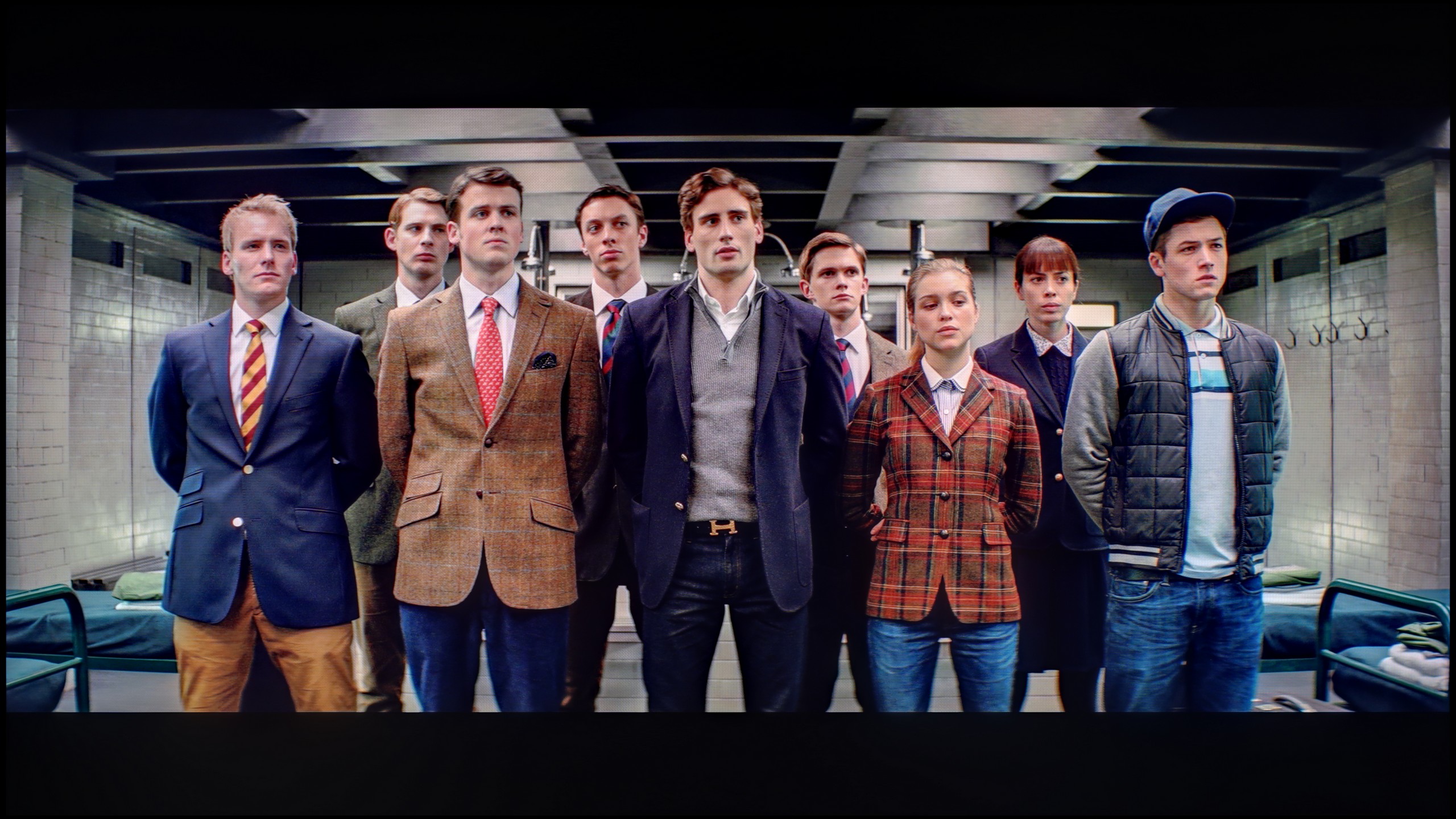


In SDR mode, after calibration, the television Hisense 100U7KQ looks excellent. There is nothing to fault in terms of colour reproduction - both pastel and strongly saturated hues are displayed according to the Rec. 709 standard. This ensures that the image looks natural and in line with the director's vision. As a result, viewers can enjoy an authentic visual experience, with colours and tonal subtleties faithfully rendered.
In HDR mode, however, there is a noticeable boost in bright tones. The television attempts to beautify the picture, which can lead to an artificial brightening. This phenomenon becomes even more evident in real scenes, where bright parts of the image may be excessively enhanced. Although the colours in HDR are generally good, they are intentionally boosted too much by the manufacturer, which can affect their naturalness.
This approach by the manufacturer to displaying images in HDR mode may not appeal to everyone, especially those who value authenticity and fidelity to original colours. However, for those who prefer more dynamic and vivid images, such an emphasis on bright tones can be an attractive solution, adding extra sparkle and impact to the scenes.
After calibrating the QN80F, it immediately showed that it was capable of much more. The previous pinkish tint disappeared, and the white balance finally looks like it should – natural and without excessive deviations. The colours gained depth, and the image became more saturated and cohesive, making watching films simply more enjoyable. It's a bit like removing a light haze from the screen – suddenly everything appears sharper and clearer. The management of brightness has also improved. The television no longer gets easily lost in dynamic shifts, and the EOTF graph shows that the curve tracking is significantly more stable. Of course, there are no miracles – the limited number of zones still means that small bright elements can be slightly washed out, but that's a result of the design itself, not the settings. After this correction, the QN80F feels like a more mature piece of equipment, and watching films finally provides the satisfaction expected from a television even in a higher class.
Smoothness of tonal transitions
10/10
9/10

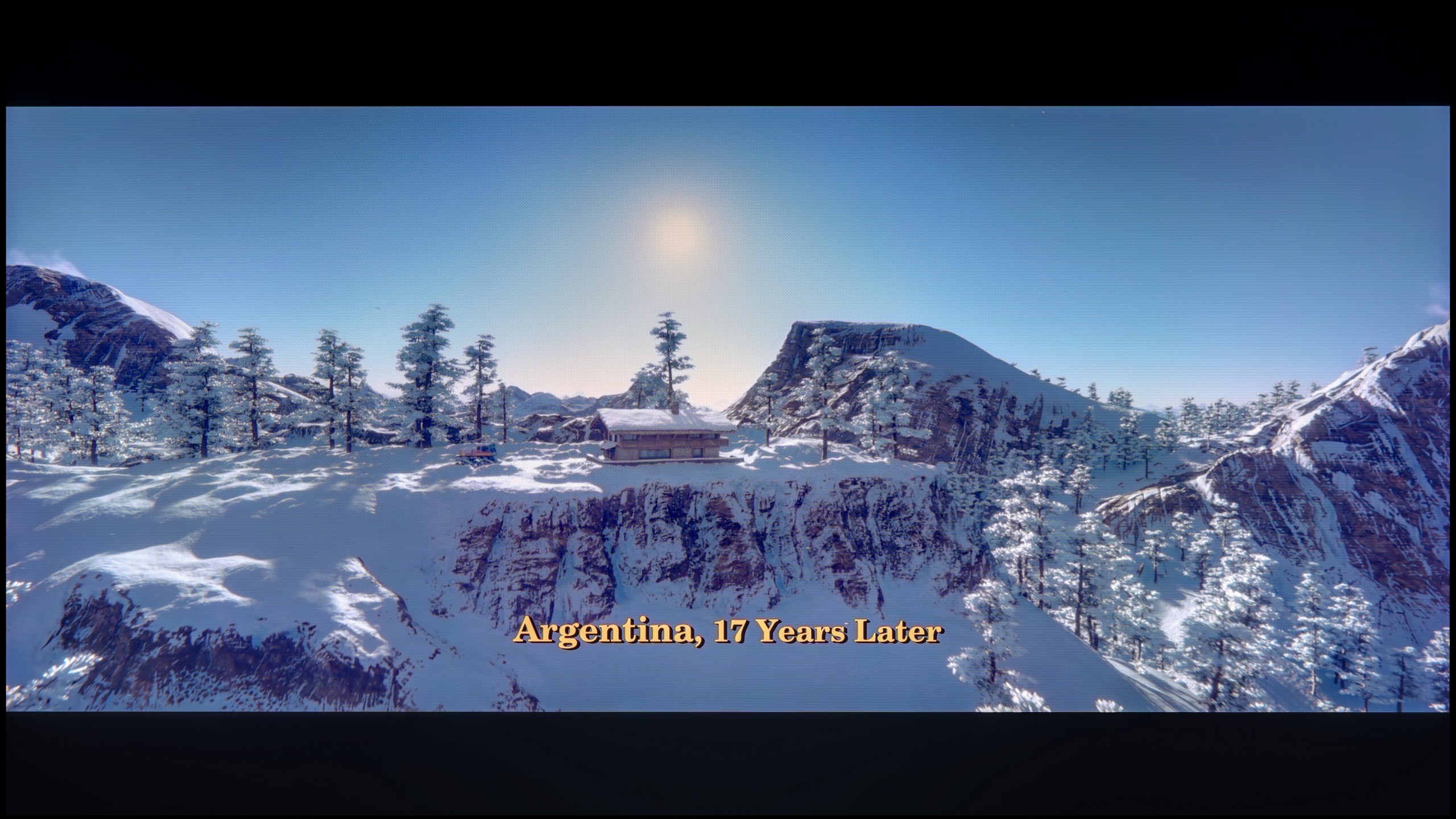



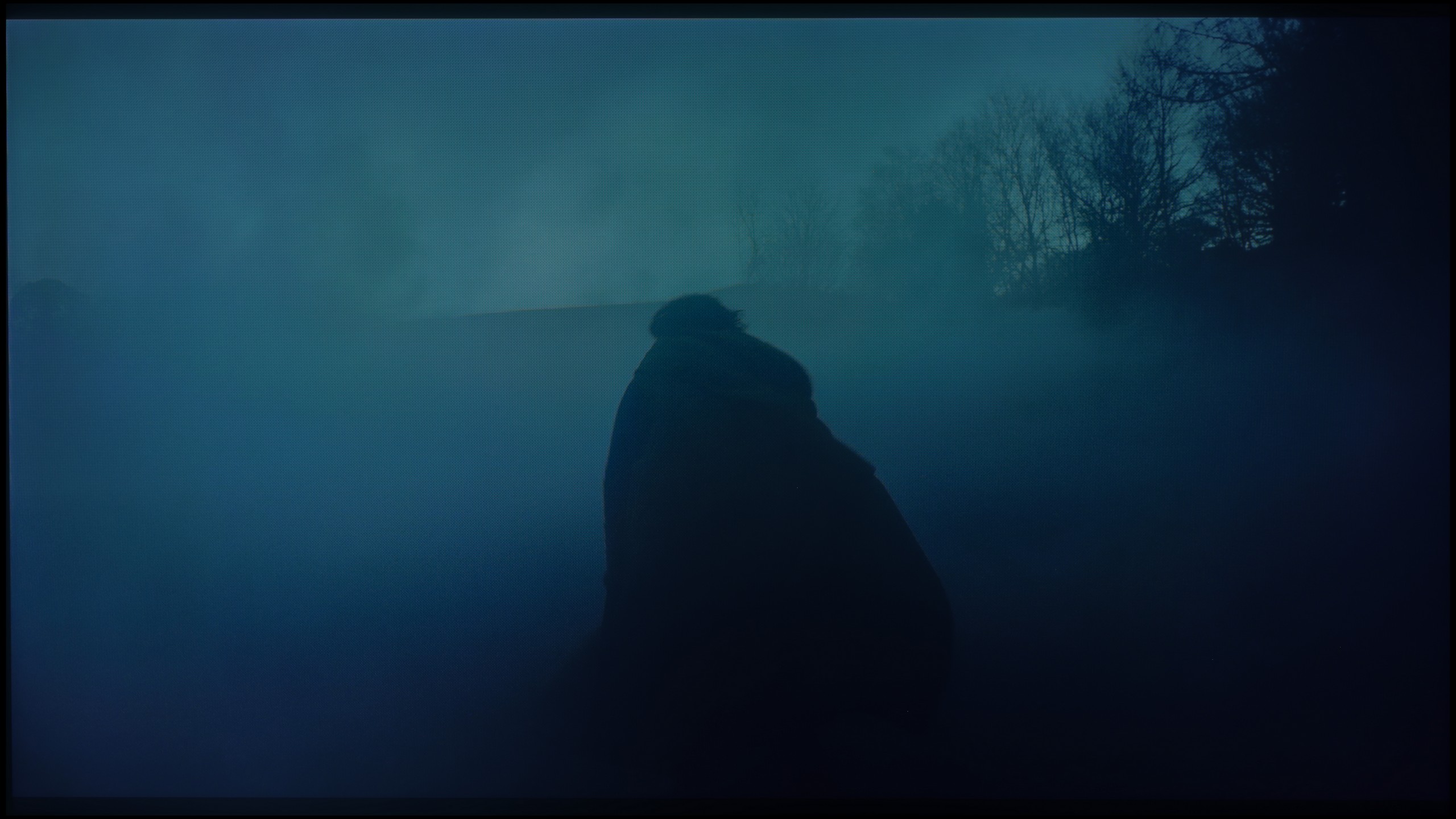

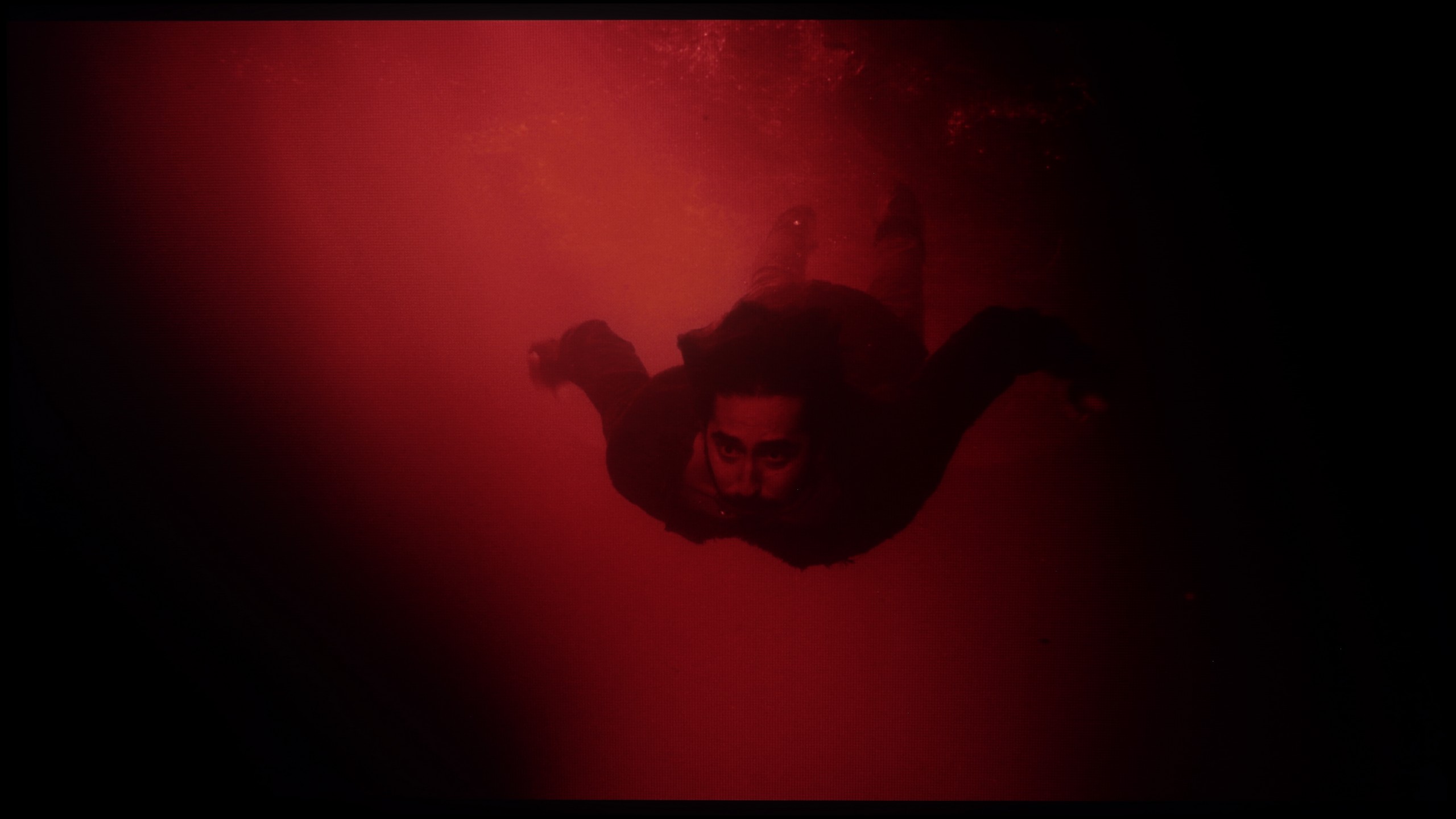




The tonal transitions on the tested television can be described in one word: perfect. Throughout the test sequence, where we played very dark gradients from the most difficult scenes known to us, there was no sign of any choppiness or separating layers. These impressive results testify to the high quality of the panel and the advanced image processing algorithms. Of course, the ideal experience is maintained as long as we watch the television straight on – at an angle, the dark shades can significantly stand out, which is discussed in detail in a dedicated paragraph. It is also worth noting that such a problem can be observed with lower quality materials, but this is not the fault of the television, rather the inferior quality of the source itself.
In terms of the fluidity of tonal transitions, that is, blending colours into one another, the QN80F performs really well. The colour gradients are smooth, the image does not break up into artificial bands, and the sky or extensive surfaces in shadow look as they should – without odd blotches or disturbances. It performs particularly well in scenes with dark tones, where many televisions can struggle and generate unpleasant artefacts. Here, everything remains consistent and clear. Yes, in the brightest sections, one can sometimes notice slight banding, but that is a detail that only very discerning viewers examining the image frame by frame will pick up on. In everyday use, there is practically nothing to speak of. The QN80F gives a sense of assurance that tonal transitions will not be a distracting element.
Image scaling and smoothness of tonal transitions
6/10
7/10
Smooth transition function

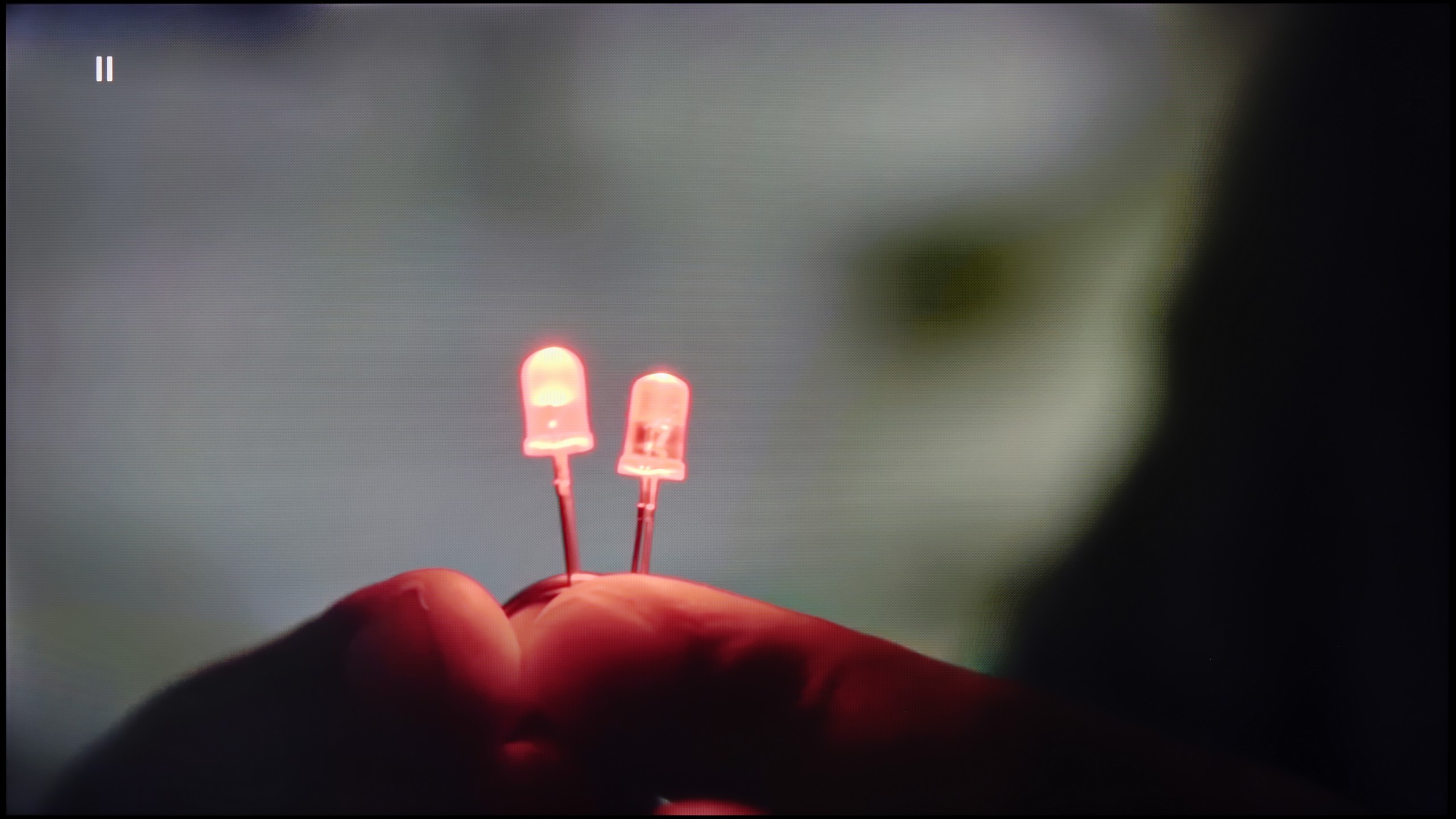
Image without overscan on the SD signal


Although the television is equipped with a feature for reducing posterisation called "Smooth Gradation," we did not notice a significant effect of its operation. Materials subjected to heavy compression, such as YouTube videos, still exhibited choppy, distinct tonal transitions, which did not look particularly favourable. While this is due to the material itself rather than the television, it would be good if there were a feature to mask these problems, similar to those found in displays from competing brands.
The image scaling, which is crucial when playing lower resolution content, is rated as average. Details are not overly blurred, and the image is not "smudged"; however, there is visible jaggedness on the edges of objects, such as branches, and a halo effect around figures and text. Although the television performs quite well, there is still room for improvement, especially in the context of displaying lower quality materials.
With lower quality materials, such as films from YouTube or older television recordings, the QN80F can display its strengths and weaknesses. If strange colour transitions or artefacts start to appear on the screen, it is worth using the noise reduction function. The best setting is at "medium" – it smooths out problematic sections while not blurring the entire image. However, one compromise must be remembered: this function always removes film grain. If someone enjoys its presence in older productions, it is better to keep the reduction turned off, as the grain simply disappears regardless of the setting.
Resolution scaling, or upscaling, is another strong point of Samsung. The QN80F may not be the best television on the market in this regard, but it performs very well in its price range, which is very important for such a large size as a 100-inch screen. Even lower quality materials can gain a second life – the image becomes sharper, more readable, and overall much more pleasant to perceive. A weak point remains overscan, which is the slight cropping of edges in very low resolutions (e.g., 576p), something that has been a longstanding issue for Samsung. Fortunately, this is practically of no consequence when watching HD and 4K content on a daily basis.
Blur and motion smoothness
7/10
7/10

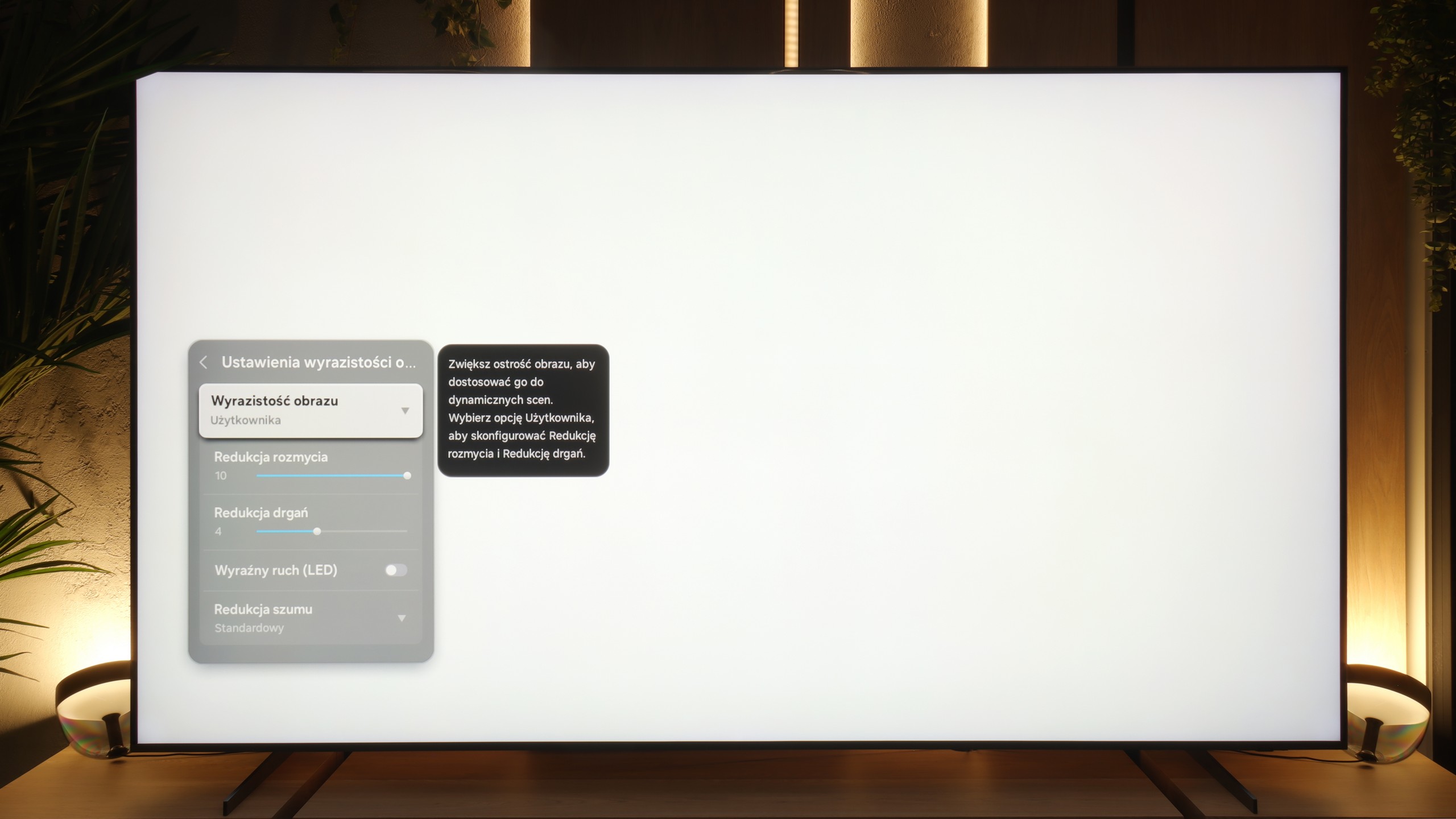
Blur (native resolution, maximum refresh rate):






Blur (BFI function enabled):
Image flickers in this mode



Smużenie ():
Smużenie (4K@144Hz):

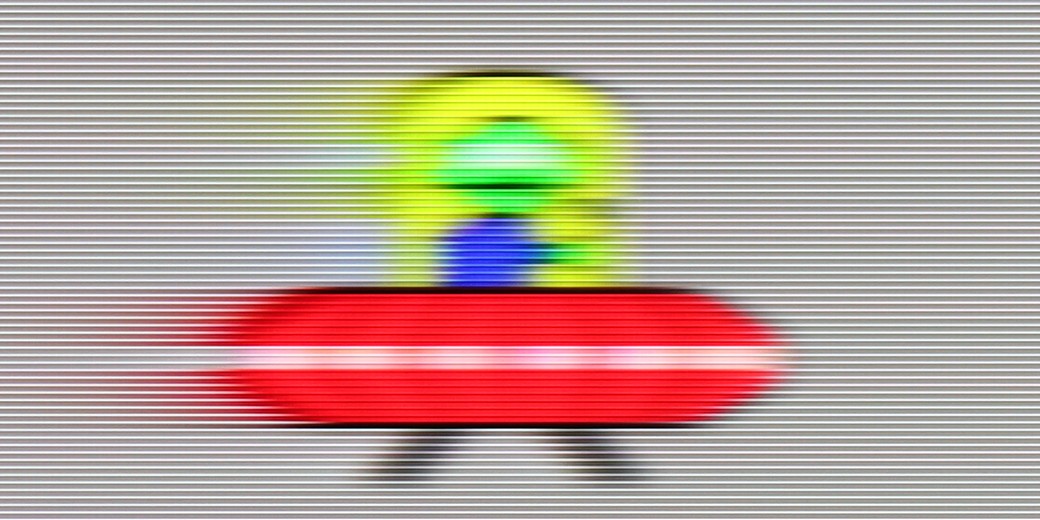
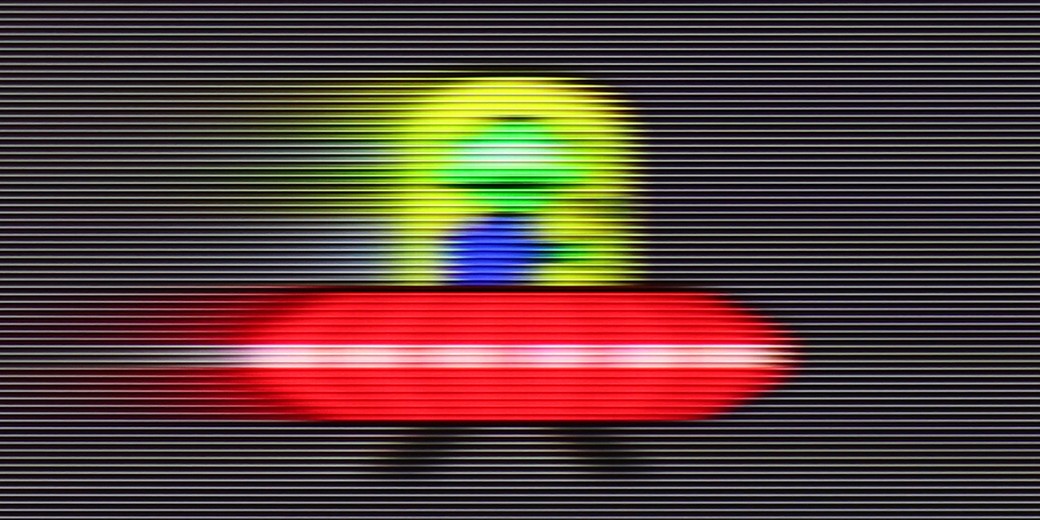
The television correctly accepts a 4K signal up to 144 Hz, allowing for very smooth images to be displayed in high resolution. When the resolution is limited to Full HD, the television is capable of handling even 240 Hz, but such a signal can only be obtained from a PC. Unfortunately, the use of this feature is limited by several factors.
First of all, the Full HD resolution on a large television screen may seem insufficient, which affects image quality. Furthermore, the response time of the panel in this model is not short enough to fully utilise the refresh rate of 240 Hz. As a result, at such a high refresh rate, significant overdrive occurs, causing noticeable smearing and so-called "ghosting" behind moving objects.
It is also worth noting the motion smoothing function in the television, which operates up to 120 Hz. This is especially useful when watching sports and films, where smooth motion is crucial. The television provides stable operation of this function, minimising the amount of generated artifacts. Motion smoothness can be adjusted using two sliders – one for film smoothness and the other for reducing smearing in sports content.
In summary, although the television Hisense U7KQ offers impressive capabilities in terms of image refresh rates, limitations related to the response time of the panel and appropriate resolution may impact the actual benefits of these features. Nevertheless, the motion smoothing function works very well, improving the experience of watching dynamic content.
The QN80F features a 144 Hz panel, and this is evident in practice – with full refresh, the image is remarkably smooth, and motion blur remains at an acceptable, barely noticeable level. However, this mode is primarily aimed at PC gamers. The most important reference point in everyday use remains the 120 Hz refresh rate, and this is where a certain discrepancy arises. During the UFO test, we noticed a splitting of the contours of rapidly moving objects – it looked as if the television had the BFI (Black Frame Insertion) feature permanently activated, which in practice led to an unpleasant effect of double edges. We do not yet know whether this is a software issue or a characteristic of this model, but in its current form, such behaviour is hard to commend.
Console compatibility and gaming features
8.5/10
8.2/10
- ALLM
- VRR
- VRR range48 - 144Hz48 - 144Hz
- Dolby Vision Game Mode
- Correct implementation of HGIG
- 1080p@120Hz
- 1440p@120Hz
- 4K@120Hz
- Game bar

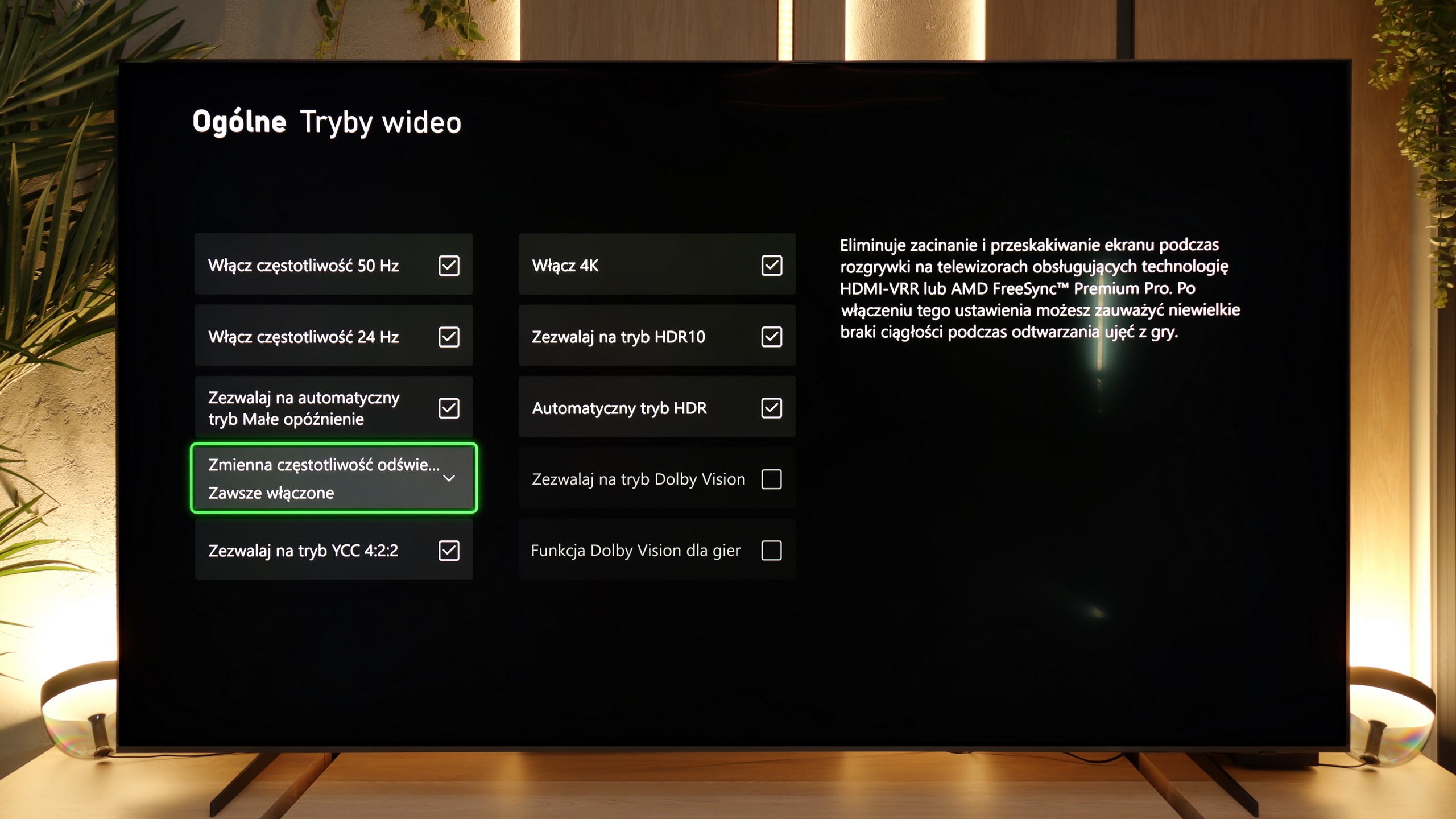

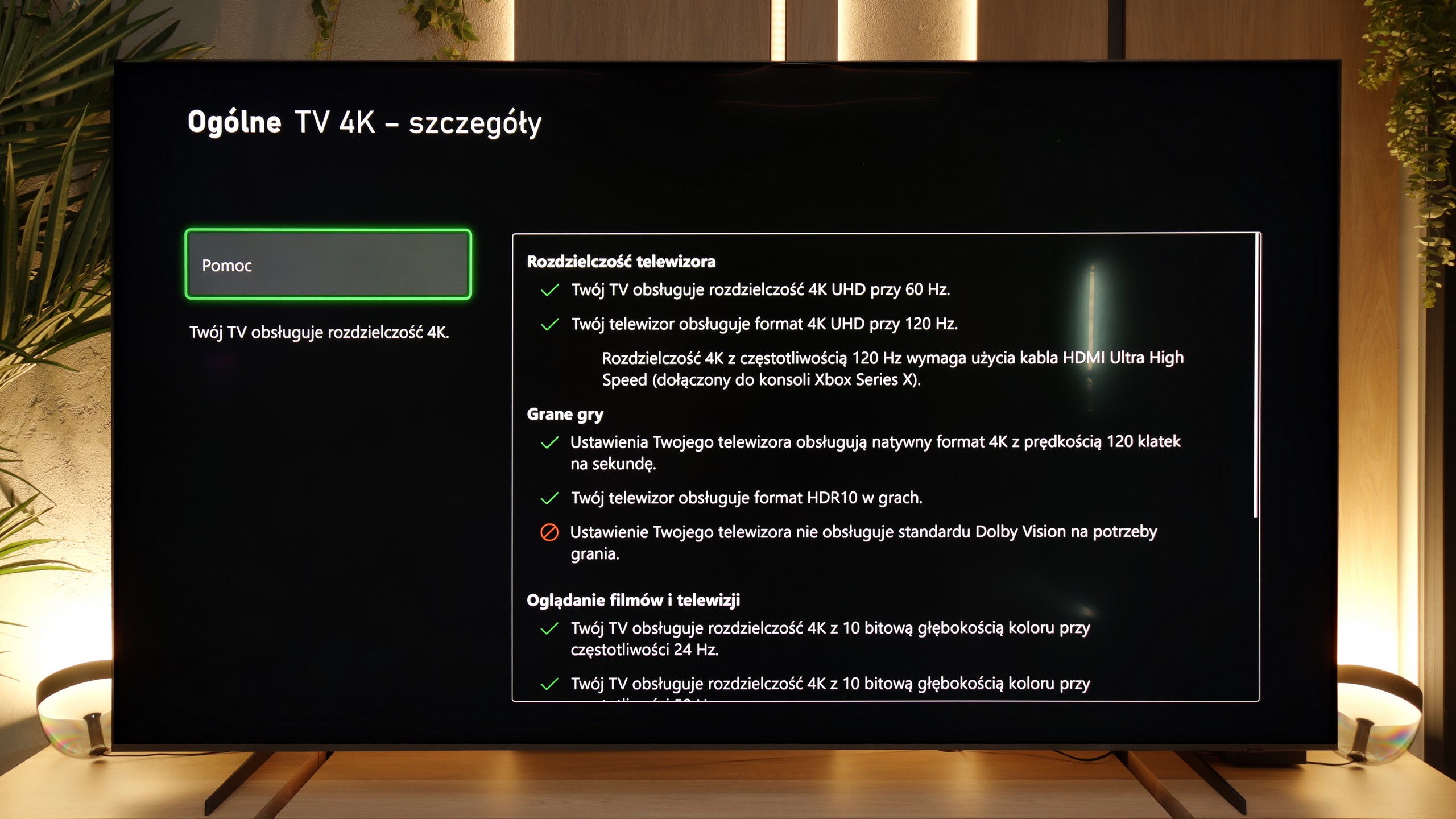

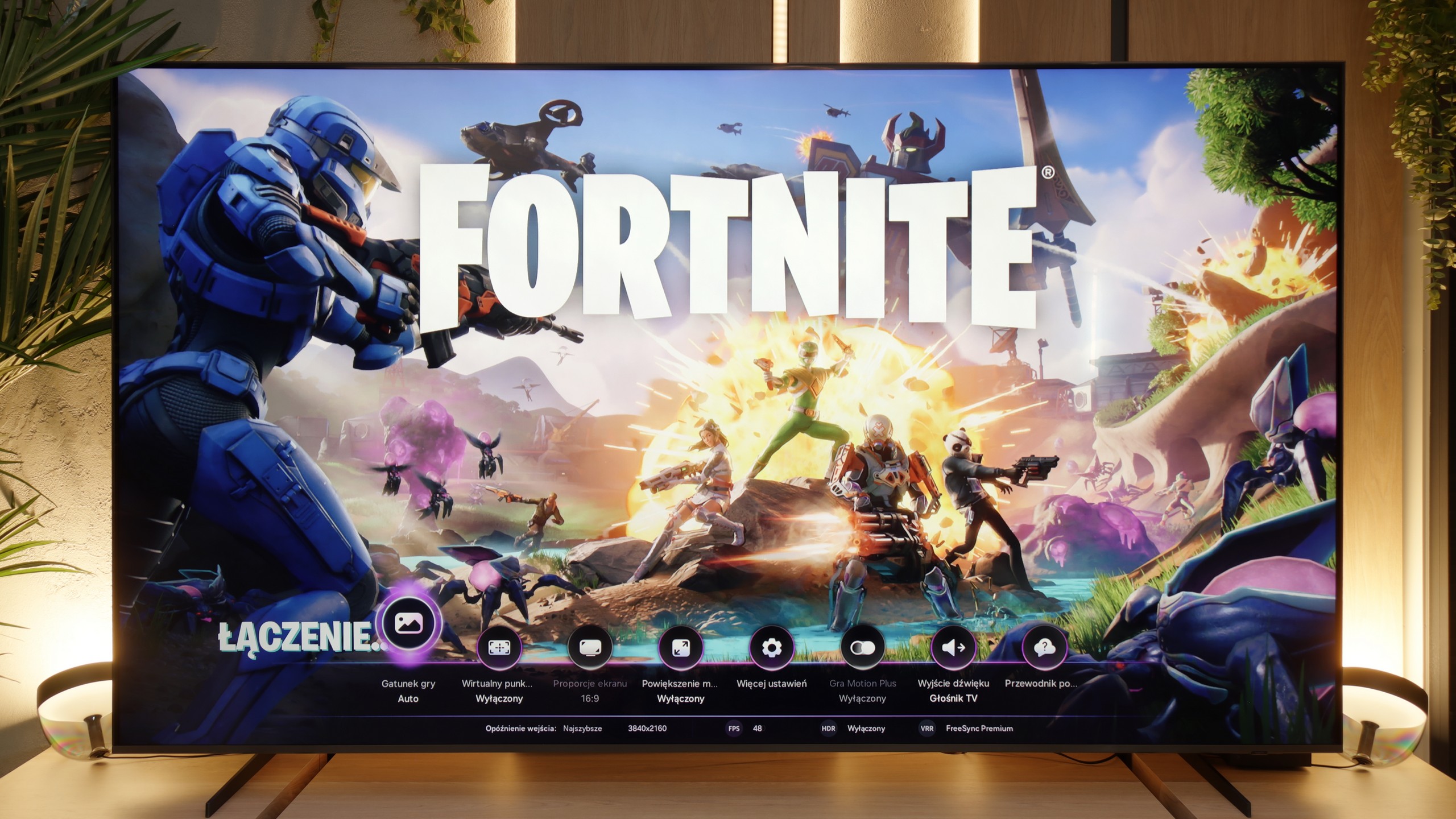

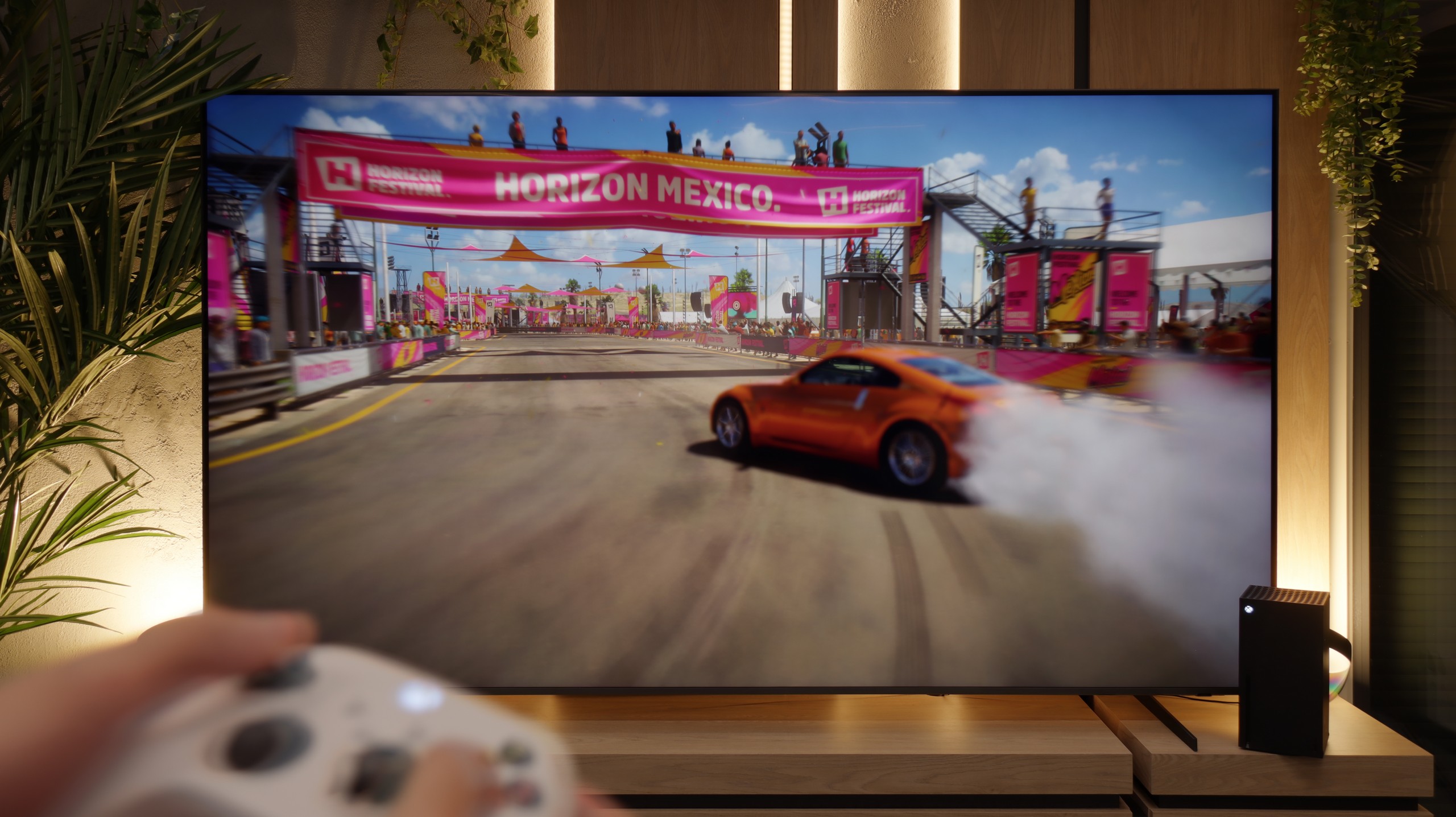
The Hisense U7KQ television supports all the key features for gamers that users of Xbox or PlayStation consoles may expect. These features include, among others, support for high refresh rates, low input lag, and a game bar. Generally speaking, most of these features work correctly, providing a satisfying gaming experience.
However, the VRR (Variable Refresh Rate) technology does not function optimally. When VRR is activated, the television disables the local dimming feature, which significantly reduces image quality. In VRR mode, there is a lack of good contrast and high brightness in HDR mode, resulting in unsatisfactory image quality. In practice, this means that the VRR mode may be rarely used by gamers due to these limitations.
Additionally, the television does not support the HGIG (HDR Gaming Interest Group) mode, which is designed to optimise HDR image quality in games. The absence of this mode leads to issues with double tone mapping – once in the television and once in the console. As a result, the quality of HDR games is lower, which may affect the overall gaming experience.
In summary, although the Hisense U7KQ offers many features for gamers, certain key aspects, such as the optimal functioning of VRR and support for HGIG, may not meet the expectations of more demanding users. Nonetheless, the television still provides good support for most standard gaming features, making it a suitable choice for a wide range of gamers.
The Samsung QN80F gives the impression of a television designed with gamers in mind. On the list of advantages, we have a 144 Hz panel, four full-fledged HDMI 2.1 ports, complete support for VRR and ALLM, as well as one of the best-designed game bars on the market. Additionally, there is the Game Motion Plus motion smoother, which works even in games without any real increase in input lag, making the QN80F an absolute standout in this category. In practice, this means you can enjoy smoother visuals without sacrificing responsiveness, which is a dream for many console gamers!
As is usual with Samsung, there is no Dolby Vision support in games, and this is no longer surprising. However, we were much more surprised to find that in the 2025 models… the HGIG function has disappeared. This function allowed consoles like the PlayStation 5 or Xbox Series X to perfectly adjust HDR tone mapping to the capabilities of the television. In the current firmware for the QN80F, this option simply does not exist – it seems more like an error rather than a conscious decision by the manufacturer, but as of the day of testing, it must be acknowledged that HGIG is not available. Due to this one omission, the QN80F, instead of being almost the perfect television for gamers, becomes a device that is only "almost" perfect. This is quite a shame because, aside from this, Samsung has created a model that truly raises the bar in the gaming equipment segment.
Input lag
9.8/10
9.8/10
SDR
HDR
Dolby Vision
The television Hisense U7KQ is characterised by very low input lag in all picture modes, which is important for gamers requiring quick screen response. Regardless of the type of signal – whether it's 4K, Full HD, 60 Hz or 120 Hz – the delays remain below 20 ms. Such a result is excellent and ensures that even the most demanding gamers will not experience any lags during gameplay. As a result, this television deserves the highest rating in terms of gaming performance.
Input lag is something that can ruin all the fun, but fortunately, there is nothing to worry about with the QN80F. At 120 Hz, the lag drops below 10 ms, making it feel as if the television doesn’t exist at all between the controller and the image. The response is instant, everything happens exactly when we want it to. At 60 Hz, the lag is around 17 ms – that's more, but still within full comfort. In practice, console games look and run smoothly, with no annoying lags to speak of. This is the moment when you can really see that Samsung has put effort into the gaming mode – the QN80F provides a sense of control and speed that one would expect rather from a monitor than from a 100-inch behemoth in the living room.
Compatibility with PC
8/10
8.6/10

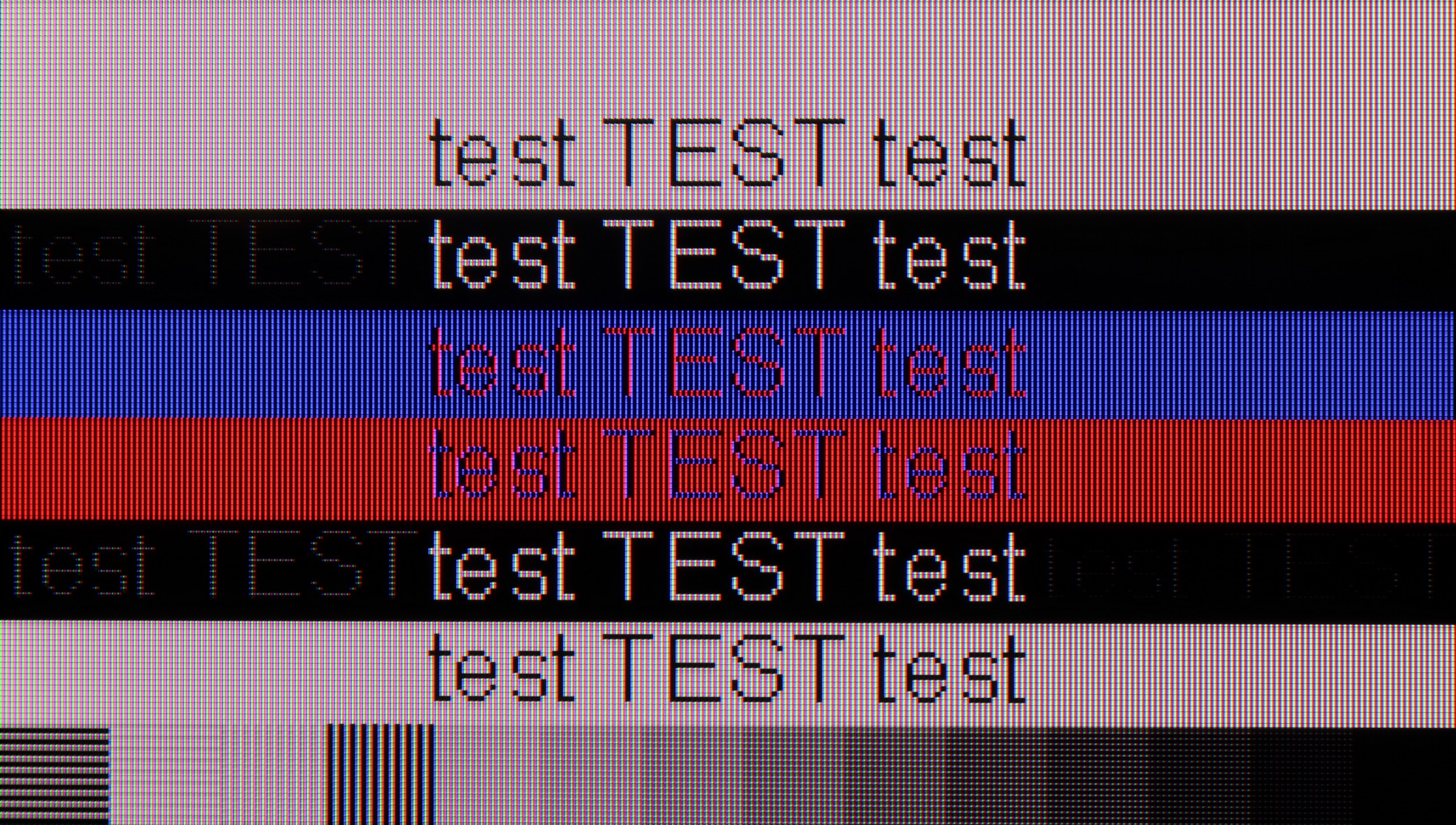
The Hisense U7KQ television works excellently with a PC, thanks to several key features. Firstly, it supports chroma 4:4:4, which is essential for displaying text and images in the highest quality without losing detail. As a result, images and text are clear and sharp, which is particularly important for users who use the television as a monitor for work or gaming.
Additionally, the Hisense U7KQ boasts very low input lag in PC mode, meaning minimal delays between actions performed on the computer and the image displayed. This is crucial for gamers who need quick screen response to gain an advantage in fast-paced games. Low input lag ensures that every action is instantly reflected on the screen, enhancing the overall user experience.
Despite using a BGR pixel layout instead of the more traditional RGB layout, the readability of fonts on the screen is at a good level. BGR (Blue-Green-Red) is a configuration where subpixels are arranged in a different order than in standard RGB. This can sometimes affect text quality, depending on the operating system settings.
In summary, the Hisense U7KQ is a good choice for PC users, offering support for chroma 4:4:4, low input lag, and good text readability, making it a versatile device for both work and entertainment.
The collaboration with PC on the QN80F is a bit odd. When it comes to gaming, there are no reasons to worry: we have full support for 144 Hz, both G-Sync and FreeSync work, and the smoothness is truly impressive. The problem only arises when using the computer for everyday tasks – especially when we are looking at fonts instead of games. In 120 Hz mode, the image looks near perfect. The letters are readable, sharp, and the only minor detail that can be noticed is a slight dimming of thin lines. However, this is a detail that shouldn't interfere with normal usage. Greater issues arise in 144 Hz mode, which is intended to be created for PC gamers. Instead of crystal-clear fonts, a strange anomaly appears. The television adds shadows with small dots to them, making the text look simply odd. Fortunately, this is more of a curiosity than a real problem. After all, it’s hard to imagine someone placing a 100-inch colossus on their desk and staring at Excel or Word sheets from half a metre away. For gaming, the QN80F is excellent, and for normal collaboration with a PC, it's better to simply stick to 120 Hz mode.
Viewing angles
4/10
3.3/10
The screen features a VA matrix, which unfortunately has its limitations regarding viewing angles. Unlike some competing models, Hisense U7KQ does not have any coatings that improve this aspect, meaning that the image quality significantly decreases when viewed from an angle.
With a minimal deviation from the central axis, it becomes apparent that the image contrast starts to deteriorate. Details in the dark parts of the image become excessively pronounced, and colour saturation decreases. These effects are typical for VA matrices and in practice, this means that the best viewing experience can only be achieved when sitting directly in front of the screen.
For users who plan to watch television from different spots in the room, this can be a significant limitation. Reduced image quality at an angle may impact overall satisfaction with use, especially when watching films or programmes with a larger group.
The viewing angles are unfortunately a weak point of the QN80F. With smaller televisions, it's still bearable, but in the case of 100 inches, the flaw becomes much more noticeable. It's enough to sit slightly to the side for the edges of the screen to appear washed out compared to its centre. And when we try to watch something at a greater angle, the picture simply loses its charm – colours become faded, contrast drops, and the depth visible straight on is no longer present. It's a shame that with such a large screen, Samsung did not attempt to apply coatings to widen the angles. This is where it would make the most sense, as it's hard to expect everyone in the living room to sit perfectly straight in front of the screen. If someone primarily cares about wide angles, they should look for mini-LEDs on an IPS matrix – these may not have such black levels, but they perform significantly better in side viewing.
TV efficiency during daytime
7.8/10
7/10

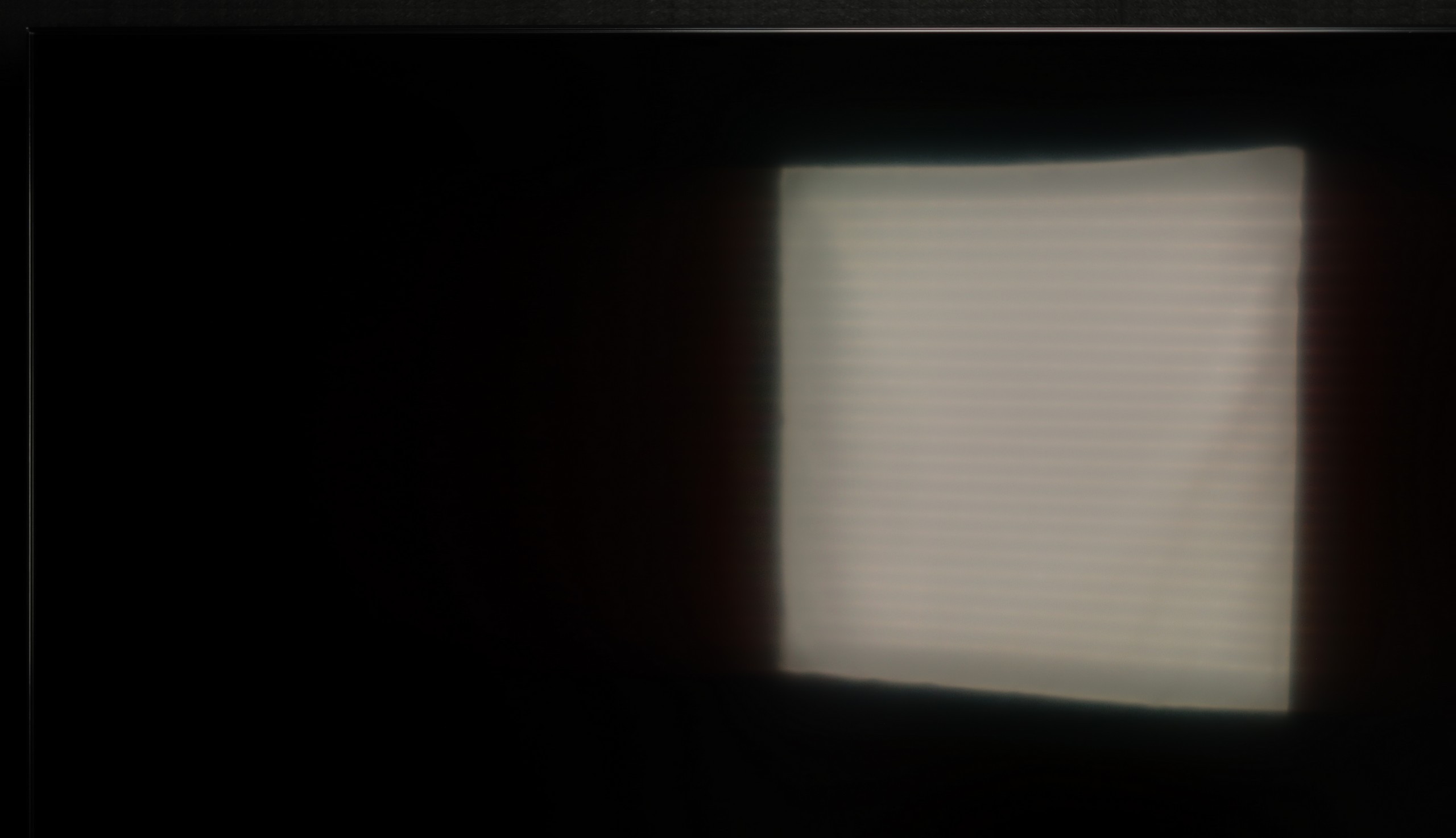

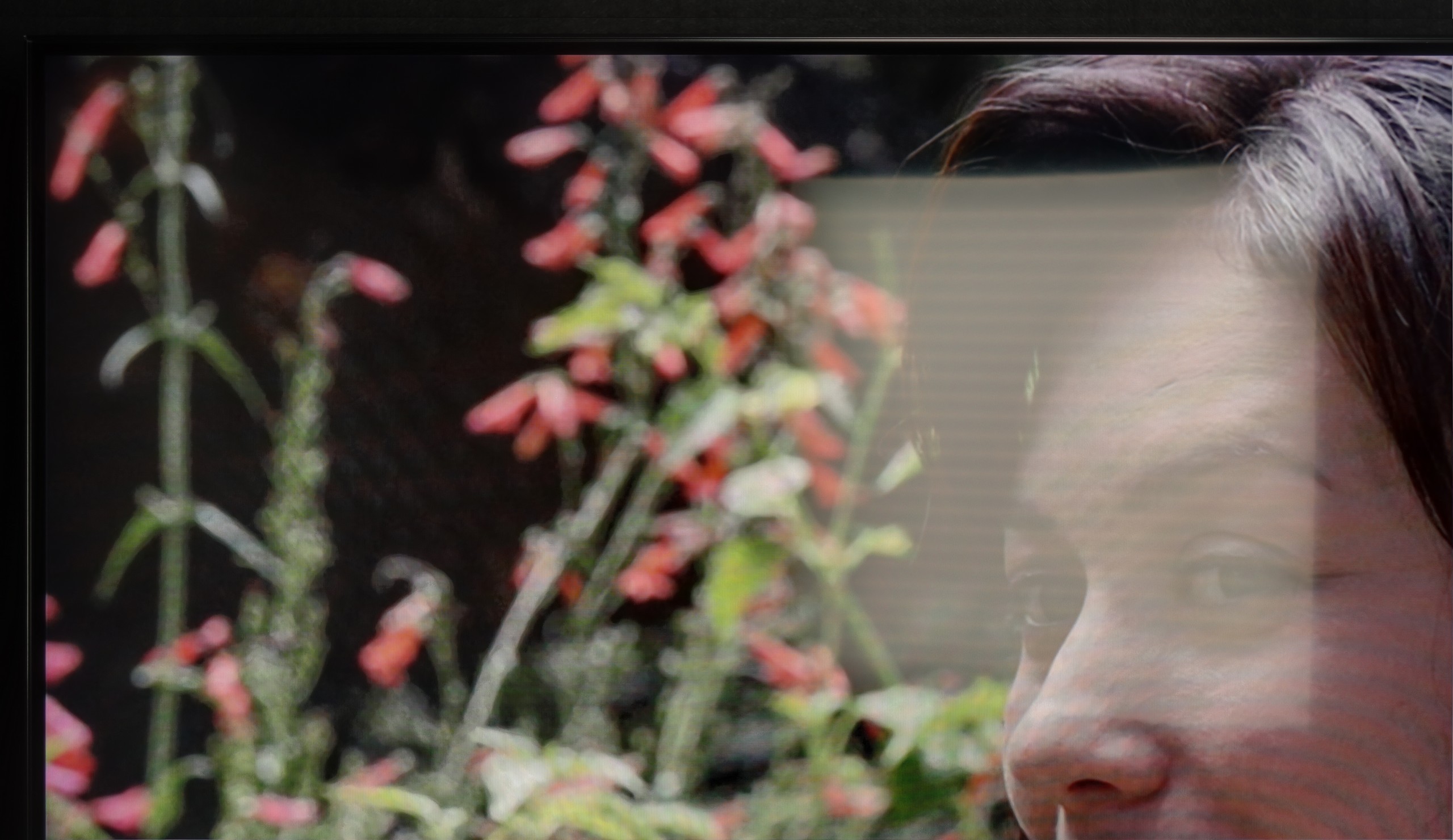
Matrix brightness
Average luminance SDR
Samsung QN80F 100" : 623 cd/m2
Hisense U7KQ: 966 cd/m2
Hisense U7KQ does not have the best anti-reflective properties, as its panel is equipped with a satin finish that is not as effective in reducing glare as the matte coatings used in some other televisions, nor does it maintain as deep a black as glossy panels. It is somewhere between these two effects. Light reflections may be visible, particularly in brightly lit rooms, which can affect viewing comfort.
However, the high peak brightness values that this model achieves effectively compensate for these limitations. Thanks to this brightness, the image remains well visible even in sunny rooms. This makes the television perform quite well in challenging lighting conditions, where other models might struggle to provide adequate image quality.
The performance of the QN80F during the day is an interesting topic, as the 100-inch version differs from the smaller sizes not only in scale but also in the coating used. Samsung opted for a different type of anti-reflective layer here, and it must be said that the effect is not as good as in the smaller models – reflections are somewhat more noticeable, especially with strong light coming in from the window. On the other hand, the manufacturer found a solution to this, as the 100-inch QN80F compensates with sheer brightness. The average luminance in SDR content exceeds 620 nits, which in practice provides a really strong reserve for viewing even in a heavily sunlit room. In everyday use, the difference between weaker reflection handling and higher brightness is practically neutralised – the television maintains readability and does not lose clarity even in the middle of the day. The end result is that although the coating in this version is not among the best, thanks to its high brightness, the QN80F performs better in bright conditions than one might expect.
Details about the matrix
Subpixel Structure:

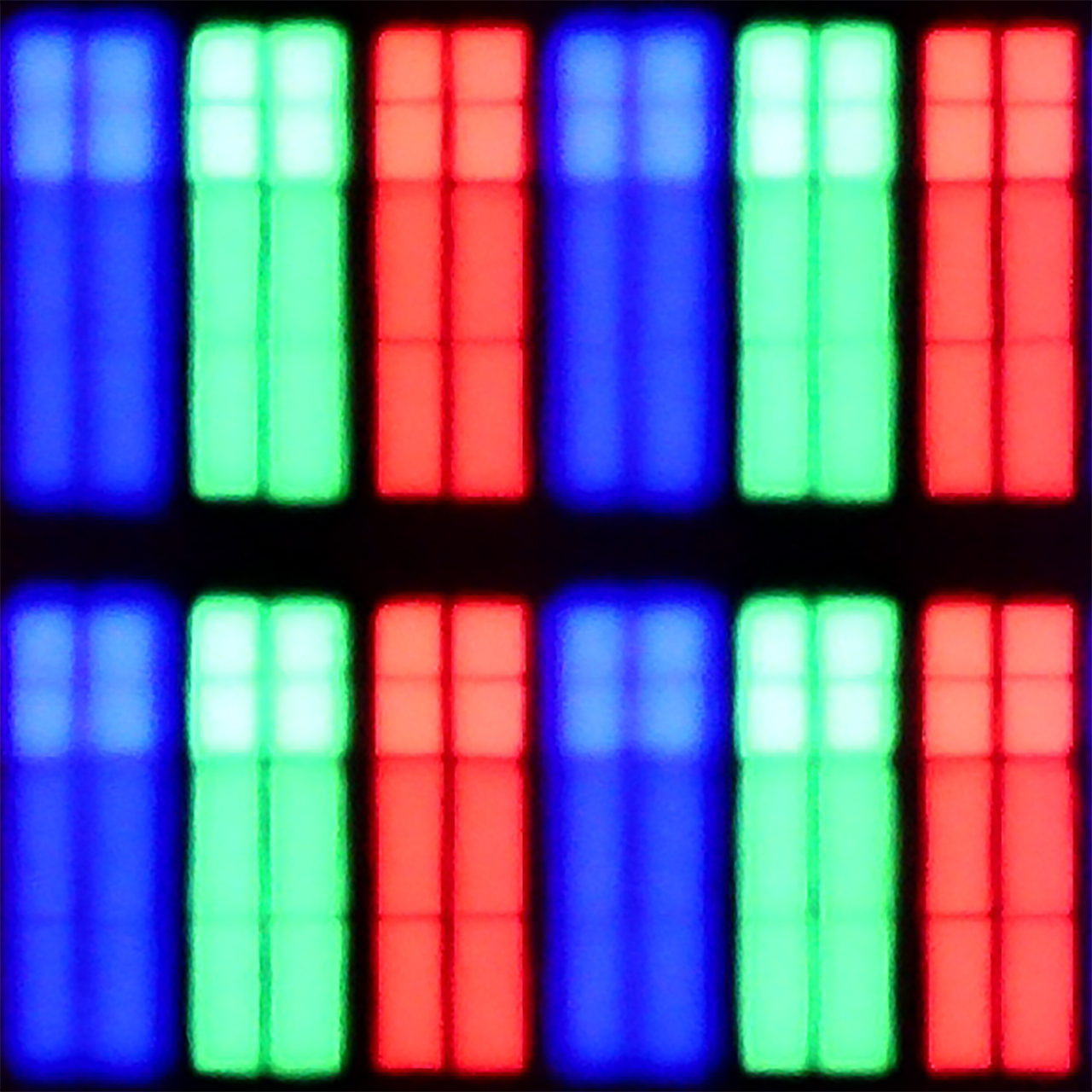
Panel uniformity and thermal imaging:
Hisense U7KQ
Samsung QN80F 100"
TV features
8.2/10
7.7/10
- HDMI inputs2 x HDMI 2.0, 2 x HDMI 2.1 48Gbps0 x HDMI 2.0, 4 x HDMI 2.1 48Gbps
- Other inputsRCA (Chinch)
- OutputsToslink (Optical audio), eARC (HDMI), ARC (HDMI), Mini-Jack (Headphones)Toslink (Optical audio), eARC (HDMI), ARC (HDMI)
- Network InterfacesWi-Fi 2.4GHz, Ethernet (LAN) 100MbpsWi-Fi 2.4GHz, Wi-Fi 5GHz, Ethernet (LAN) 100Mbps
- TV receptionDVB-T, DVB-T2, DVB-S, DVB-S2, DVB-CDVB-T, DVB-T2, DVB-S, DVB-S2, DVB-C
Classic features:
- Recording to USB (terrestrial TV)
- Recording programming
- Picture in Picture (PiP)
- RF remote control (no need to aim at the screen)
- Backlit remote control
- Teletext
- Audio only mode
- Bluetooth headphones support
- Simultaneous Bluetooth headphones & TV audio
Smart features:
- AirPlay
- Screen mirroring (Windows Miracast)
- Voice search
- Voice search in native language
- Ability to connect a keyboard and mouse


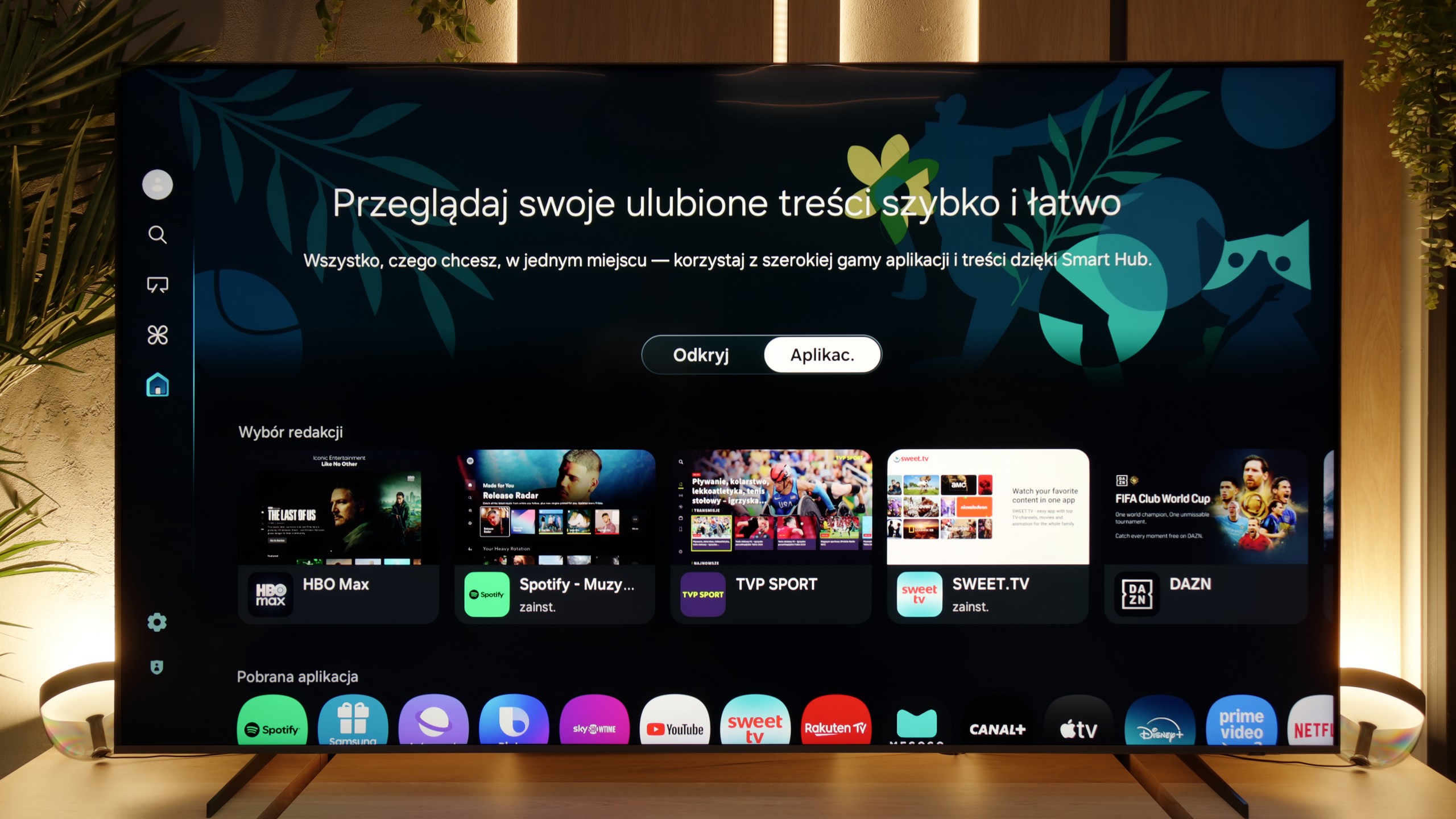
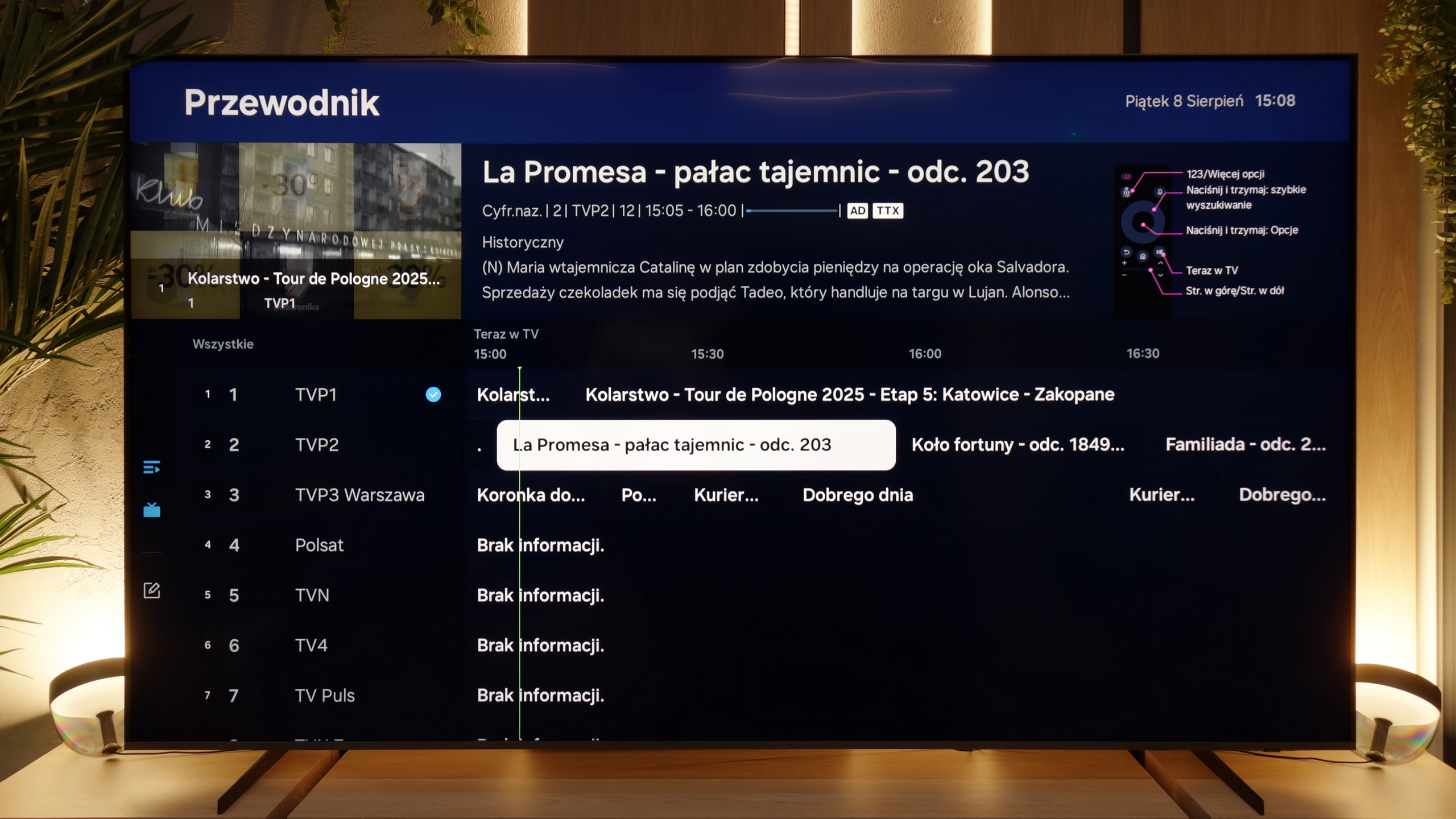
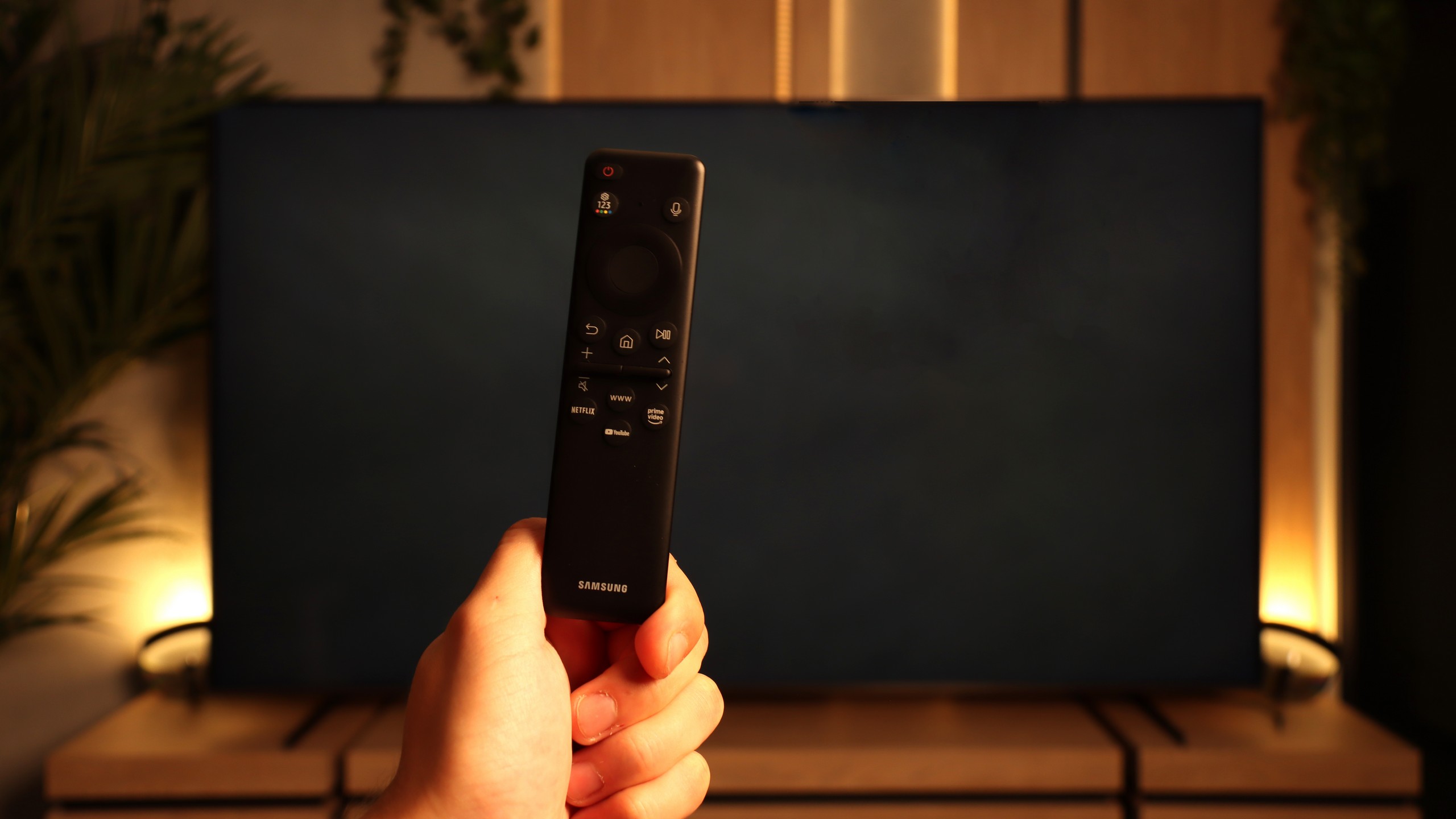
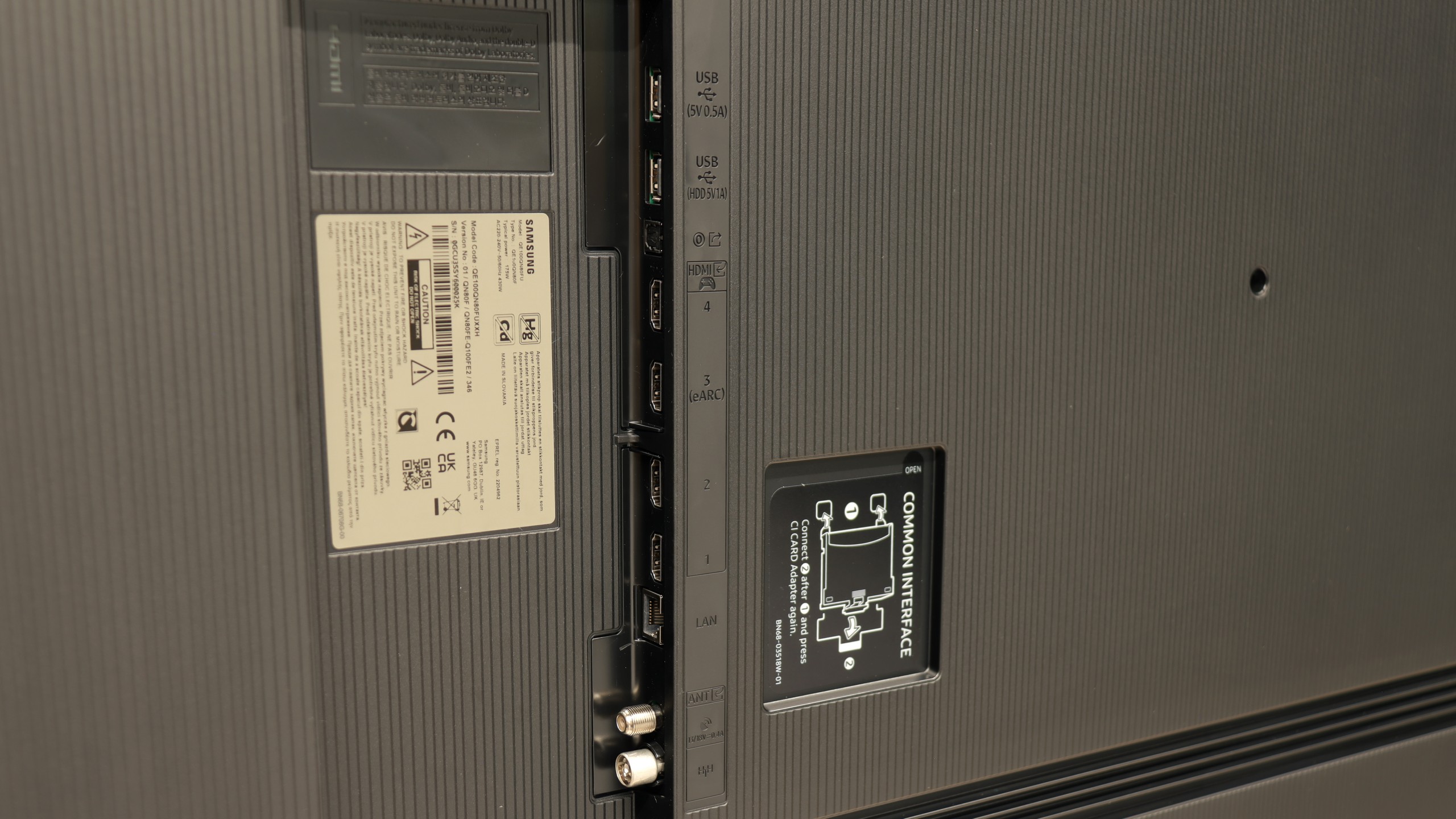
Hisense uses the VIDAA operating system, which is a proprietary solution from this brand. Although it does not offer as much expansion and the number of applications as the popular Android TV, it has its advantages. The VIDAA system operates quickly and stably, meaning that users do not have to worry about glitches or long loading times for applications.
Nevertheless, VIDAA does have certain limitations. There are quite a few applications available, but unfortunately, there is a lack of music apps such as Spotify or Tidal. Nevertheless, VIDAA supports most standard features that may be needed, such as screen mirroring, voice search in Polish, the ability to connect a keyboard and mouse, and Bluetooth headphones.
The television also supports many other features that are important to users, such as the ability to record programmes to USB and schedule recordings. However, it lacks more specific features like teletext or "Audio Only" mode, which allows users to listen to audio with the screen turned off.
In summary, the VIDAA system, although less well-known and having certain limitations compared to Android TV, offers stable and fast performance and supports most features that users may need. It is a solid solution for those looking for a simple and effective operating system in their television.
SmartTV Features: Tizen
When it comes to smart capabilities, the QN80F has much to boast about. Samsung relies on Tizen, and it is evident that this system has been refined over the years. All the major streaming apps are available, voice search works well, and there is AirPlay and Miracast, so there are no issues with streaming content from a phone or laptop. What is particularly interesting is that the television can integrate other devices in the home into its ecosystem – through SmartThings and support for the Matter standard, you can connect light bulbs, robotic vacuum cleaners, or even devices from other brands. In practice, the QN80F becomes not just a screen for movies, but also a convenient control centre for the entire flat. Of course, it is still a closed system, so a few less popular apps may not be found here, but let's agree – for 99% of users, it still provides everything necessary and even more.
Classic Features
The traditional features of the QN80F perform quite well, although some things are missing. It is worth mentioning the PiP, or picture-in-picture – a rarely seen feature that can still be very practical. Additionally, we have EPG, working teletext, and Bluetooth support, which makes it easy to pair headphones or a soundbar. On the downside, there is no USB recording from the built-in tuners, and the remote control lacks a traditional numeric keypad. Instead, we get Samsung's characteristic small remote, which may initially seem too minimalist. However, it must be acknowledged that this unassuming gadget conceals many possibilities and can control other devices such as satellite receivers, consoles, or Blu-ray players, so in practice, one remote is sufficient to manage the entire setup in the living room.
Playing files from USB
8.1/10
9/10
Supported photo formats:
Maximum photo resolution:

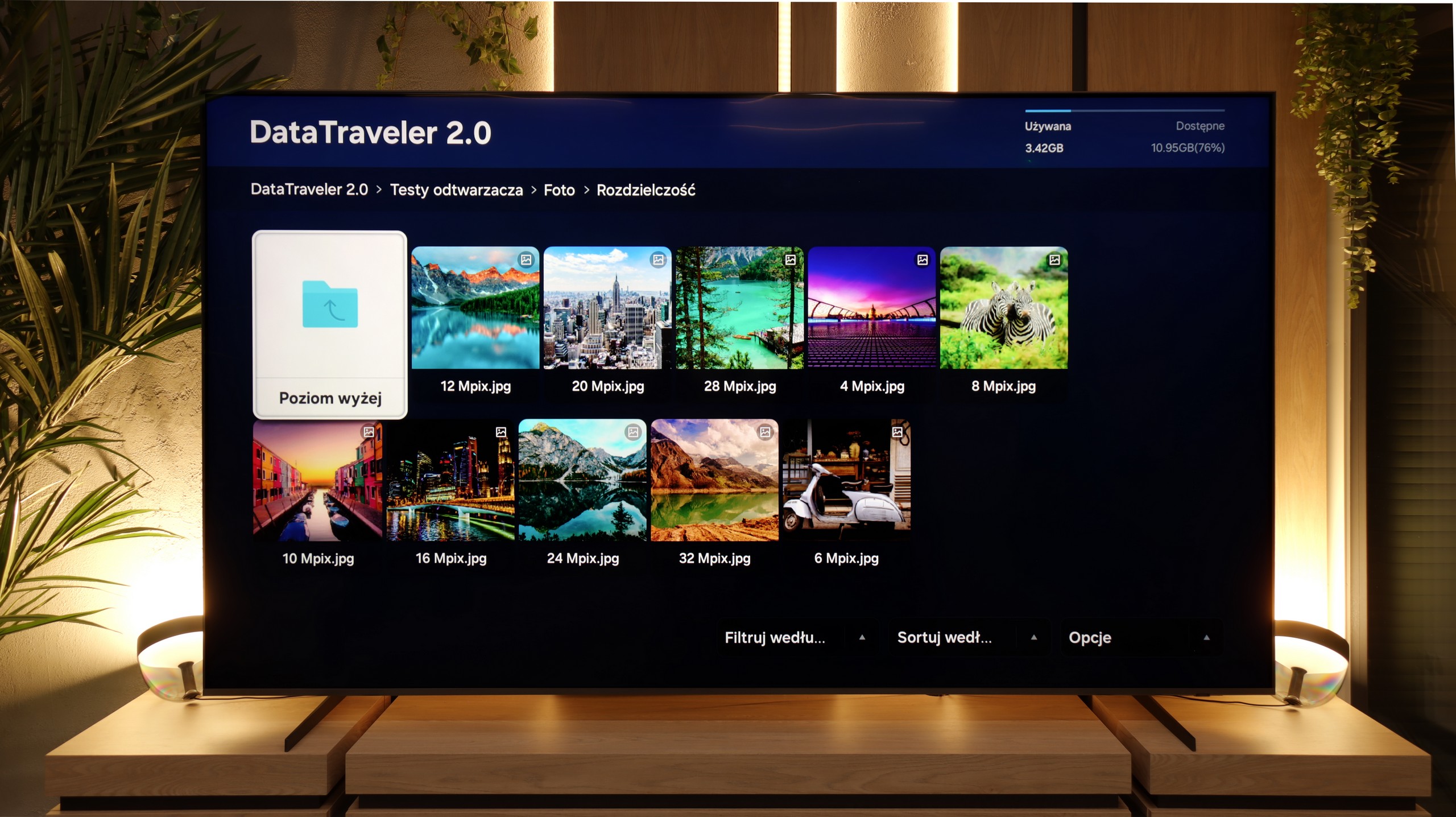
The built-in media player in the Hisense U7KQ television performs well with most popular video formats; however, there may occasionally be issues with loading subtitles, which can be frustrating for users who prefer watching films with text.
It is worth noting some limitations regarding support for less popular codecs, such as AV1 and H266. Although these codecs are not yet widely used, their lack of support could pose a problem in the future as they become more common. However, for the time being, most users will not feel their absence.
Strange behaviour has been observed when playing photos – some files in certain resolutions may not load properly. This can be problematic for individuals who wish to browse their photographs directly from a USB drive. For this reason, viewing photos on this television may be limited, as some files may not load at all.
In summary, although the built-in media player of the Hisense U7KQ handles most standard video formats well, users may encounter certain limitations related to loading subtitles and photos in specific resolutions. Issues with support for less popular codecs are currently minimal but may become more significant in the future.
The built-in media player in the QN80F performs fairly well, but it's hard to talk about complete indulgence. It handles movies quite adequately – easily playing popular video formats, from simple MP4s to heavier containers. This is not on the level of powerhouses like the VLC app, but it’s sufficient for everyday viewing. Especially since the latest update fixed the issue with supporting various subtitle formats in films. The situation is a bit worse when it comes to photos. Support is largely limited to JPG and BMP, so if someone keeps their photo archive in a different format, they must rely on an additional app or be forced to convert their photos.
Apps
7.7/10
8.7/10














































Sound
6.9/10
6.7/10
- Maximum volume83dB87dB
- Dolby Digital Plus 7.1
- Dolby True HD 7.1
- Dolby Atmos in Dolby Digital Plus (JOC)
- Dolby Atmos in Dolby True HD
- DTS:X in DTS-HD MA
- DTS-HD Master Audio
The Hisense U7KQ television offers satisfactory sound quality that is adequate for most everyday applications. The sound system of this model is characterised by good volume and clarity, making dialogues and sound effects clear. However, the television may not provide the full audio experience that can be obtained from dedicated audio systems or soundbars. One of the main audio advantages of the U7KQ is its ability to reproduce sound with minimal distortion at higher volume levels reaching up to 83dB, as well as support for Dolby Atmos and DTS.
The QN80F performs well on its own – with a light bass, a bit of space thanks to Dolby Atmos, and clear enough that daily viewing of films or series is not tiring. But with a 100-inch screen, it's hard not to add a soundbar. Only then will the scale of the image and sound start to match, because although the television manages, it's difficult to expect the built-in speakers to fill such a large living room with sound.
Acoustic Measurements
No acoustic data
87dBC (Max)
75dBC


